SŌKA GAKKAI TIMELINE
1871 (6 th day of the 6 th month): Makiguchi Tsunesaburō, founder of Sōka Kyōiku Gakkai (Value Creation Education Study Association), was born Watanabe Chōshichi in a town now called Kashiwazaki, Niigata Prefecture, Japan. He was adopted at the age of six into the Makiguchi family and moved to Otaru, Hokkaidō at the age of thirteen.
1889: Makiguchi entered Hokkaidō Normal School (predecessor to Hokkaido University of Education) in Sapporo. Upon graduation, he began teaching at the Normal School’s attached elementary school.
1893: Makiguchi changed his given name to Tsunesaburō.
1900 (February 11): Toda Jōsei, second president of Sōka Gakkai (Value Creation Study Association), was born Toda Jin’ichi in Ishikawa Prefecture. He moved with his family to Ishikari, Hokkaido two years later.
1901 (April): Makiguchi moved with his wife and children from Sapporo to Tokyo.
1903 (October 15): Makiguchi published his first major book, Geography of Human Life, (Jinsei chirigaku ).
1910: Makiguchi joined the Kyōdokai (Home Town Association).
1917: Toda obtained an elementary school teaching license and began teaching at Mayachi Elementary School in Yūbari, Hokkaido.
1920: Toda visited Makiguchi upon moving to Tokyo. Makiguchi helped Toda obtain a position teaching elementary school in the imperial capital, and the two began a lifelong mentor-disciple relationship.
1922 (December): Toda quit teaching at Mikasa Elementary School and left the profession thereafter.
1923: Toda founded a private academy called Jishū Gakkan that was dedicated to preparing elementary school students for secondary school entrance examinations; the academy’s pedagogy was based on Makiguchi’s theories of pragmatic instruction. Toda changed his given name to Jōgai (“outside the fortress”).
1928 (January 2): Ikeda Daisaku (originally Taisaku) was born in what is now the Ōmori neighborhood of Ōta Ward, Tokyo.
1928 (June): Makiguchi was convinced by fellow elementary school educator Mitani Sōkei to dedicate himself to Nichiren Shōshū Buddhism. Toda later followed his mentor’s example.
1930 (November 18): Makiguchi published Volume One of Sōka kyōikugaku taikei ( System of Value-Creating Educational Study ); Toda oversaw the publication of this text and suggested the term sōka, or “value creation,” as a title for Makiguchi’s educational theories. This publication date has subsequently been memorialized as Sōka Gakkai’s founding moment.
1932: Makiguchi retired from schoolteaching.
1935: Makiguchi and Toda began publishing the magazine Shinkyō (New Teachings), which bore the byline “educational revolution, religious revolution” (kyōiku kakumei / shūkyō kakumei ).
1937 (January 27): The inaugural formal meeting of Sōka Kyōiku Gakkai was convened at a Tokyo restaurant .
1940: The Japanese government enacted the Religious Corporations Law and Sōka Kyōiku Gakkai came under increased scrutiny by the Special Higher Police. Despite this, Makiguchi and other Gakkai leaders dedicated the next several years to organizing hundreds of study meetings and engaging enthusiastically in shakubuku, the form of proselytization promoted within Nichiren Shōshū tradition. After Gakkai adherents took up shakubuku in earnest, the organization grew to more than five thousand registered members by 1943.
1940 (October 20): Makiguchi was appointed Sōka Kyōiku Gakkai’s first president, and Toda its general director.
1941 (June 20): Sōka Kyōiku Gakkai launched a new periodical titled Kachi sōzō (Value Creation).
1942 (May 10): The Japanese government ended Kachi sōzō ‘s publication at its ninth issue.
1943 (July 6): Makiguchi, Toda, and nineteen other Gakkai leaders were arrested in multiple locations during a coordinated police raid. They were charged with violating the Peace Preservation Law and detained thereafter at Sugamo Prison in Tokyo. Makiguchi and Toda were the only two leaders who refused to recant their convictions.
1944 (November 18): Makiguchi Tsunesaburō died of malnutrition at the hospital ward in Sugamo Prison.
1944 (November 18): Toda, after months of intense study of the Lotus Sūtra and chanting the Lotus ‘s title namu-myōhō-renge-kyō (the daimoku) millions of times, experienced a vision in which he joined the innumerable Bodhisattvas of the Earth (jiyu no bosatsu).
1945 (July 3): Toda was released on parole, only a few weeks before Japan surrendered to Allied forces on August 15. He changed his given name from Jōgai to Jōsei (“holy fortress”) and set about reconvening the Gakkai.
1946 (March): Toda changed the name of the organization from Sōka Kyōiku Gakkai to Sōka Gakkai (Value Creation Study Association). The newly reformed group met on the second floor of Toda’s publishing and distance education company Nihon Shōgakkan.
1946 (May 1): Toda was appointed general director of Sōka Gakkai.
1947 (August 14): Ikeda accompanied a friend to a Sōka Gakkai study meeting; he joined the group ten days later.
1949 (January 3): Ikeda began working at Nihon Shōgakkan.
1950 (November 12): Toda resigned as Sōka Gakkai’s general director.
1951 (April 4): The first edition of the Seikyō shinbun (Holy Teaching Newspaper), the periodical that would become Sōka Gakkai’s primary media outlet, was published.
1951 (May 3): Toda accepted appointment as second president of Sōka Gakkai at a gathering of approximately 1,500 members.
1951 (May): The launch of the Great March of Shakubuku (shakubuku daikōshin) that saw Sōka Gakkai surge from relative obscurity into Japan’s largest new religious movement.
1951 (November 18): The first edition of the Shakubuku Doctrine Manual (Shakubuku kyōten) was published, a book which, for the next nineteen years, supplied Gakkai members with explanations of Nichiren Buddhist concepts and arguments to employ against “false sects” in the course of proselytizing.
1952 (April 27): The “Tanuki Festival,” an incident in which a group of Young Men’s Division members on a pilgrimage to the Nichiren Shōshū head temple Taisekiji seized a Shōshū priest named Ogasawara Jimon.
1952 (April 28): The first edition of the New Edition of the Complete Works of the Great Sage Nichiren ( Shinpen Nichiren Daishōnin gosho zenshū) was published. Known as the Gosho zenshū or simply the Gosho, a single-volume collection of Nichiren’s writings that continues to serve as the organization’s primary source for its Buddhist practice. It was published on a date that commemorated Nichiren’s first chanting of namu-myōhō-renge-kyō (the daimoku) seven hundred years earlier.
1953 (January 2): Ikeda was appointed Young Men’s Division leader.
1953 (November 25): Ikeda changed his given name to Daisaku.
1953: Sōka Gakkai began holding written and oral “appointment examinations” (nin’yō shiken) to test youth leaders on Nichiren Buddhist doctrinal knowledge.
1954 (October 31): Toda reviewed ten thousand Young Men’s and Young Women’s Division members at Taisekiji from atop a white horse.
1954 (November 7): The Youth Division held its first sports competition on the grounds of Nihon University in Tokyo; this event served as the model for Sōka Gakkai’s subsequent mass performances.
1954 (22 November): Sōka Gakkai established a Culture Division (Bunkabu), a sub-organization dedicated primarily to selecting candidates to run in elections and to mobilizing members to gather votes.
1954 (December 13): Ikeda was appointed Sōka Gakkai’s Public Relations Director.
955 (March 11): In an event known as the “Otaru Debate” (Otaru montō), members of Sōka Gakkai’s Study Department challenged priests from the Minobu sect of Nichiren Buddhism to a doctrinal debate.
1955 (April 3): Members of Sōka Gakkai’s Culture Division won election in city councils in Tokyo wards and in other municipalities; this marked the first time Sōka Gakkai ran its own candidates for office.
1955: By the end of this year, Sōka Gakkai claimed 300,000 member households.
1956 (8 July): Sōka Gakkai ran six independent candidates for election to the House of Councilors (Upper House); three were elected.
1956 (August 1): Toda issued an essay titled “On the Harmonious Union of Government and Buddhism “ (Ōbutsu myōgō ron) in the Gakkai study magazine Daibyaku renge (Great White Lotus).
1957 (June): Gakkai members clashed with affiliates of Tanrō, a coal miner’s union in Yūbari, Hokkaidō, in conflicts over electioneering and collective bargaining.
1957 (July 3): The beginning of an event memorialized as the “Osaka Incident” took place. Ikeda Daisaku was arrested in Osaka in his capacity as Sōka Gakkai’s Youth Division Chief of Staff for overseeing activities that constituted violations of elections law.
1957 (September 8): Toda issued “Declaration for the Banning of the Hydrogen Bomb,” calling for the death penalty as punishment for evil people who use this weapon.
1957 (December): Sōka Gakkai surpassed Toda Jōsei’s stated goal of 750,000 convert households.
1958 (April 2): Toda Jōsei died of liver disease. By the time of Toda’s death, Sōka Gakkai claimed in excess of one million adherent households.
1958 (June 30): Ikeda was appointed head of Sōka Gakkai’s newly organized bureaucratic hierarchy, occupying the post of General Manager.
1958 (September 23): 70,000 Gakkai adherents gathered at Tokyo’s Gaien National Stadium to watch 3,000 fellow members perform in the organization’s fifth sporting competition.
1959 (June 30): Ikeda was appointed head of Sōka Gakkai’s board of directors.
1960 (May 3): Ikeda Daisaku was appointed third president of Sōka Gakkai.
1960 (October 2): Ikeda departed with fellow Gakkai leaders on a visit to the United States, Canada, and Brazil, officially inaugurating the spread of Sōka Gakkai into a global enterprise. This grip was followed by trips to Asia, Europe, the Middle East, Australia, India, and other places over the following years.
1961 (November 27): Sōka Gakkai formed the Clean Government League (Kōmei Seiji Renmei), which successfully ran nine candidates for the House of Councilors in January, 1962.
1962 (April 2): The first edition of Kōmei shinbun was published; this newspaper became the primary media outlet for political operations.
1963 (October 18): Sōka Gakkai’s Min-on Concert Association was founded; it sponsored thousands of artistic performances in ensuing years.
1964 (May 3): Ikeda abolished political subdivisions within Sōka Gakkai and declared that henceforth the group was to be a purely religious organization. Sōka Gakkai now claimed in excess of 3.8 million member households.
1964 (November 8): One hundred thousand Gakkai members participated in a Culture Festival ( bunkasai ) at National Stadium in Sendagaya, Tokyo. Sōka Gakkai staged numerous other massive Culture Festivals in subsequent years.
1964 (November 17): Ikeda announced the dissolution of Kōmei Seiji Renmei and the founding of the “Clean Government Party” (Kōmeitō).
1965 (January): Seikyō shinbun began carrying serial installments of The Human Revolution ( Ningen kakumei ), the novelized version of Sōka Gakkai’s history and Ikeda Daisaku’s biography that members came to regard as an essential text.
1965 (October): Between October 9 and 12, eight million members in Japan contributed more than 35.5 billion yen to the construction of the Shōhondō, a massive new hall to be constructed at Taisekiji to house the daigohonzon , the calligraphic mandala that serves as Sōka Gakkai’s and Nichiren Shōshū’s primary object of worship.
1967 (January 29): Twenty-five Kōmeitō candidates were elected to the House of Representatives (Lower House).
1968 (April 1): Junior and Senior High Schools (Sōka Gakuen) were founded in Tokyo, marking the start of Sōka Gakkai’s private accredited school system.
1969 (October 19): Sōka Gakkai launched the New Student Alliance (Shin Gakusei Undō) as its answer to the Student Movement protesting the renewal of the U.S.-Japan Security Treaty. 70,000 members of the Gakkai’s Student Division gathered in Tokyo’s Yoyogi Park.
1969 (November): Events that came to be known as the genron shuppan bōgai mondai , or “problem over obstructing freedom of expression and the press” surrounding attempts by Kōmeitō and allies to forestall publication of the book I Denounce Sōka Gakkai.
1969 (December 28): Forty-seven Kōmeitō candidates were elected to the Lower House, and Kōmeitō received just over 10 percent of the popular vote. It was now the third largest party in the Japanese Diet.
1970 (January): Sōka Gakkai claimed 7.55 million member households.
1970 (May 3): In the wake of the I Denounce Sōka Gakkai scandal, Ikeda Daisaku announced the official separation of Sōka Gakkai and Kōmeitō and a new Gakkai policy of seikyō bunri , or “separation of politics and religion.”
1971 (April 2): Sōka University opened in Hachiōji, western Tokyo.
1971 (June 15): Takeiri Yoshikatsu, head of Kōmeitō, accompanied Prime Minister Tanaka Kakuei to the People’s Republic of China as part of a mission that ushered in normalization of diplomatic relations between China and Japan.
1972 (May 5): Ikeda met for the first time with British historian Arnold J. Toynbee in the first of hundreds of dialogues with prominent figures. The “dialogue” format became a central feature of Gakkai media and propagation efforts after this point.
1972 (October): Sōka Gakkai and Nichiren Shōshū celebrated the opening of the Shōhondō, a massive modern hall at Taisekiji that could accommodate more than six thousand worshippers.
1973 (May 3): Fuji Art Museum opened in Shizuoka; moved later to Hachiōji, next to Sōka University, and was renamed Tokyo Fuji Art Museum.
1974 (December 5): Ikeda met with Premier Zhou Enlai in Beijing.
1975 (January 26): Soka Gakkai International (SGI) was founded at a World Peace Conference in Guam, and Ikeda Daisaku was declared SGI president.
1976 (March): The tabloid Gekkan pen (Monthy Pen) began publishing a series of articles alleging liaisons between Ikeda and six women, including top Women’s Division leaders. Sōka Gakkai sued for defamation and the Tokyo District Court ruled in its favor.
1977 (October): Sōka Gakkai opened Toda Memorial Park, its first gravesite outside a Nichiren Shōshū temple and the first of thirteen massive mortuary facilities the group has built in Japan. Competition for Gakkai member graves began to escalate between Sōka Gakkai and Nichiren Shōshū.
1977: The first major conflict between Ikeda Daisaku and the Nichiren Shōshū priesthood took place.
1978 (June 30): Sōka Gakkai issued a statement in the Seikyō shinbun reaffirming Nichiren Shōshū priestly lineage claims.
1978 (November 7): Ikeda led two thousand Gakkai administrators to Taisekiji on an “apology pilgrimage” (owabi tōzan).
1979: The Youth Division established a Peace Conference, and the Married Women’s Division and other subgroups soon followed with similar initiatives. World peace, in place within Sōka Gakkai since the early 1960s as a guiding theme, became a central organizational concern from this era onward.
1979 (April 24): Ikeda resigned as third president of Sōka Gakkai. He took the position Honorary President and retained his post as president of SGI. He maintained a low profile for approximately one year. Hōjō Hiroshi was inaugurated as Sōka Gakkai’s fourth president.
1981 (April): Sōka Gakkai registered as an NGO (non-governmental organization) with the United Nations High Commissioner for Refugees (UNHCR).
1981 (July 18): Akiya Einosuke was appointed fifth Sōka Gakkai president.
1983 (January 25): Ikeda issued his first annual “Peace Proposal.”`
1984 (January 2): Ikeda was reappointed as Nichiren Shōshū’s chief lay representative by the Shōshū’s Chief Abbot Abe Nikken.
1984 (September 29 and 30): The World Youth Culture Festival was held at Osaka’s Kōshien Stadium.
1990 (December): The second major conflict between Ikeda Daisaku and the Nichiren Shōshū priesthood took place. Acrimony between the Shōshū priesthood and the Sōka Gakkai leadership erupted in a series of missives between the two camps.
1991: Conflict between the priesthood and Sōka Gakkai leaders escalated.
1991 (November 28): In a final move, the priesthood issued a “Notice of Excommunication of Sōka Gakkai and Nichiren Shōshū.” Henceforth, parishioners who wished to enter sect temples, including the head temple Taisekiji, were required to pledge that they were unaffiliated with Sōka Gakkai. Gakkai members were henceforth barred from pilgrimages to their principal object of worship.
1992 (August 11): Nichiren Shōshū issued a specific edict excommunicating Ikeda Daisaku.
1993 (October 2): Sōka Gakkai began conferring objects of worship ( gohonzon ) replicas made from a transcription of the daigohonzon mandala inscribed by the Shōshū Chief Abbot Nichikan in 1720. Gakkai members were instructed to turn in their old gohonzon and receive new ones directly from Sōka Gakkai.
1995 (January): In response to the January 17 Hanshin Awaji Earthquake that devastated the city of Kobe and the surrounding region, Sōka Gakkai opened ten Culture Centers to refugees, mobilized thousands of member volunteers, and gathered over 230 million yen in relief funds.
1998 (May): Nichiren Shōshū destroyed the Shōhondō at Taisekiji.
1999 (October 5): Kōmeitō, now New Kōmeitō after decades of political transformations, entered into coalition with the Liberal Democratic Party (LDP). Kōmeitō remained allied with the LDP in government until 2009, and the LDP-Kōmeitō coalition was reelected to government in December, 2012.
2001 (May 3): Soka University of America opened in Aliso Viejo, California.
2002 (April): Sōka Gakkai issued new institutional regulations.
2006 (November 9): Harada Minoru was appointed sixth Sōka Gakkai president.
2011 (March): In the wake of the March 11 earthquake, tsunami, and nuclear disasters that devastated northeastern Japan, Sōka Gakkai housed in excess of 5,000 refugees in Culture Centers across the region, gathered hundreds of millions of yen in emergency aid, and mobilized thousands of volunteers from across Japan to take part in both short- and long-term rescue and relief initiatives.
2013 (November 18): Sōka Gakkai officially opened its new General Headquarters at Shinanomachi, Tokyo. The organization now claims 8.27 million member households, and Soka Gakkai International claims in excess of 1.5 million members in 192 countries outside Japan.
2023 (November 15): Ikeda Daisaku died.
FOUNDER/GROUP HISTORY
Sōka Gakkai can be described as Japan’s most successful new religious movement. The group claims 8.27 million adherent households in Japan, and more than 1.5 million members in 192 other countries under its overseas umbrella organization Soka Gakkai International, or SGI. These numbers are inflated, but statistical surveys conducted over the past few decades indicate that between roughly two and three percent of the Japanese population self-identifies as belonging to Sōka Gakkai (McLaughlin 2009; Roemer 2009). This makes the organization the largest active religious group in the country. No temple-based Buddhist group, Shintō organization, or other new religious group matches Sōka Gakkai’s ability to mobilize adherents for the sake of proselytizing, electioneering, and other activities.
Sōka Gakkai’s history distinguishes it from many Japanese new religious movements. First, as its name Sōka Gakkai, or “Value Creation Study Association” suggests, the group did not begin as a religion, but was founded as an educational reform association. Second, Sōka Gakkai in effect had three separate foundings, one each under its first three presidents: Makiguchi Tsunesaburō (1871-1944), Toda Jōsei (1900-1944), and Ikeda Daisaku (1928-2023). Each of these founders oversaw a new era of institutional changes.
Sōka Gakkai claims its founding moment as November 18, 1930, when its first president Makiguchi Tsunesaburō published the first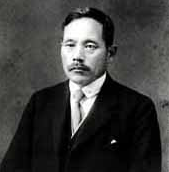 volume of his collected essays, System of Value-Creating Educational Study ( Sōka kyōikugaku taikei ), marking the start of the Value Creation Education Study Association (Sōka Kyōiku Gakkai), Sōka Gakkai’s predecessor. Makiguchi was born in 1871 in what is now Niigata Prefecture in northeastern Japan, but he moved to the northern island of Hokkaido at the age of thirteen, where he was raised and eventually educated as an elementary school teacher. In 1901, he moved with his wife and children from the Hokkaido city of Sapporo to Tokyo, where he embarked on a career teaching at a series of Tokyo elementary schools. He also collaborated with intellectuals concerned with educational reform as he published books and essays. From 1910, Makiguchi joined the Kyōdokai, or Home Town Association, a research group engaged in ethnology and surveys of local culture in rural areas; the group included the famed folklorist Yanagita Kunio (1875-1962) and internationally renowned educator Nitobe Inazō (1862-1933). Thanks to scholarly engagements in these circles and through his own research, Makiguchi’s ideas were influenced by educational and philosophical trends, including neo-Kantian thought and pragmatism, which moved from Europe and the United States into Japan around the turn of the twentieth century.
volume of his collected essays, System of Value-Creating Educational Study ( Sōka kyōikugaku taikei ), marking the start of the Value Creation Education Study Association (Sōka Kyōiku Gakkai), Sōka Gakkai’s predecessor. Makiguchi was born in 1871 in what is now Niigata Prefecture in northeastern Japan, but he moved to the northern island of Hokkaido at the age of thirteen, where he was raised and eventually educated as an elementary school teacher. In 1901, he moved with his wife and children from the Hokkaido city of Sapporo to Tokyo, where he embarked on a career teaching at a series of Tokyo elementary schools. He also collaborated with intellectuals concerned with educational reform as he published books and essays. From 1910, Makiguchi joined the Kyōdokai, or Home Town Association, a research group engaged in ethnology and surveys of local culture in rural areas; the group included the famed folklorist Yanagita Kunio (1875-1962) and internationally renowned educator Nitobe Inazō (1862-1933). Thanks to scholarly engagements in these circles and through his own research, Makiguchi’s ideas were influenced by educational and philosophical trends, including neo-Kantian thought and pragmatism, which moved from Europe and the United States into Japan around the turn of the twentieth century.
On November 18, 1930, Makiguchi published Volume One of System of Value-Creating Educational Study ( Sōka kyōikugaku taikei ). When Makiguchi compiled his essays on educational reform in this volume, he was beginning of process of summarizing a lifetime of scholarship, and his interests after this moved in the direction of religion. In 1928, Makiguchi converted to Nichiren Shōshū Buddhism. Nichiren Shōshū, or “Nichiren True Sect,” follows the teachings of Nichiren (1222-1282), a medieval Buddhist reformer. Trained primarily in the Tendai tradition, Nichiren broke away from established temples to preach that only faith in the Lotus Sūtra , held to be the historical Buddha Śākyamuni’s final teaching, and the practice of chanting the title of the Lotus in the seven-syllable formula namu-myōhō-renge-kyō were effective means of achieving salvation in the degraded Latter Days of the Buddha’s Dharma ( mappō ) (see below).
In 1932, Makiguchi retired from schoolteaching, and he turned thereafter toward concentrated study and practice of Nichiren Shōshū Buddhism. Sōka Kyōiku Gakkai began to meet formally from 1937, and by the 1940s Makiguchi and the organization he established, which claimed approximately five thousand members at its peak, were firmly committed to defending Nichiren Buddhist principles. From 1941, Sōka Kyōiku Gakkai launched a periodical titled Value Creation (Kachi sōzō). This short-lived magazine featured several articles by Makiguchi in which he directly challenged the Japanese government’s religious policies. The Japanese government ended Kachi sōzō ‘s publication at its ninth issue; Makiguchi remonstrated the government for its decision in a short article titled “An Address on the Discontinuation of Publication.”
On June 27, 1943, Makiguchi and other Gakkai leaders were summoned by the Nichiren Shōshū priesthood to the sect’s headquarters at the temple Taisekiji. They were urged to abide by the dictates of the Religious Corporations Law and Japan’s wartime State Shintō injunctions by instructing Sōka Kyōiku Gakkai adherents to enshrine talismans ( kamifuda ) from the Grand Shrine at Ise, despite the fact that the practice constituted a violation of Nichiren Buddhism. Makiguchi refused to do so. On July 6, Makiguchi, his disciple Toda, and nineteen other Gakkai leaders were arrested on charges of violating the Peace Preservation Law. They were charged with violating the Peace Preservation Law and imprisoned thereafter at Sugamo Prison in Tokyo. Makiguchi died of malnutrition on November 18, 1944.
Makiguchi’s disciple Toda Jōsei was, like his mentor, born in northern Japan, raised in poverty in the northern island of Hokkaidō, 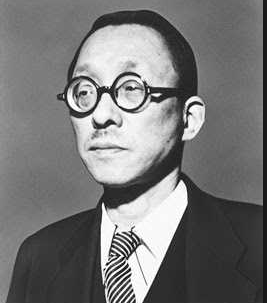 and made his way to the imperial capital to pursue his fortunes in teaching. Even after he left the teaching profession in late 1922, Toda remained beholden to his mentor Makiguchi, and he attributed his subsequent success in business to Makiguchi’s teachings. Toda alone demonstrated absolute commitment to Makiguchi by refusing to bow to the Japanese state’s pressure to recant his Nichiren Shōshū beliefs. While in prison, Toda experienced a vision in which he joined the innumerable Bodhisattvas of the Earth ( jiyu no bosatsu ) at Vulture Peak where the Buddha Śākyamuni delivers the Lotus Sūtra . He interpreted this revelation as an awakening to the sacred task of continuing his master Makiguchi’s mission to propagate Nichiren Shōshū Buddhism.
and made his way to the imperial capital to pursue his fortunes in teaching. Even after he left the teaching profession in late 1922, Toda remained beholden to his mentor Makiguchi, and he attributed his subsequent success in business to Makiguchi’s teachings. Toda alone demonstrated absolute commitment to Makiguchi by refusing to bow to the Japanese state’s pressure to recant his Nichiren Shōshū beliefs. While in prison, Toda experienced a vision in which he joined the innumerable Bodhisattvas of the Earth ( jiyu no bosatsu ) at Vulture Peak where the Buddha Śākyamuni delivers the Lotus Sūtra . He interpreted this revelation as an awakening to the sacred task of continuing his master Makiguchi’s mission to propagate Nichiren Shōshū Buddhism.
After his release from prison in July, 1945, weeks before the end of the Second World War, Toda devoted himself to resuming Makiguchi’s religious mission. He is responsible for transforming the group from a small collective into a religious mass movement. In 1946, he dropped “education” (kyōiku) from the title, changing the group’s name to Sōka Gakkai. The reformed group met initially on the second floor of Toda’s publishing and distance education company Nihon Shōgakkan. On May 1, 1946, Toda was appointed general director of Sōka Gakkai. As he continued launching business ventures, he began holding regular Gakkai study meetings (called zadankai , or “study roundtables”) and organizing a growing number of new converts under the group’s developing administrative leadership. Japan’s tumultuous economy created trouble for Toda’s businesses, and on November 12, 1950, Toda resigned as Sōka Gakkai’s general director, citing his business failures as proof of retribution for failing to commit fully to rebuilding his mentor Makiguchi’s organization. The group, which had experienced slow but steady growth to this point, began to organize for the purpose of radical expansion.
On May 3, 1951, Toda accepted appointment as second president of Sōka Gakkai. At his inauguration, Toda challenged the Gakkai’s adherents to convert seven hundred and fifty thousand families to Sōka Gakkai before his death: “If this goal is not realized while I am alive,” he declared, “do not hold a funeral for me. Simply dump my remains in the bay at Shinagawa.” The group soon developed a widely publicized reputation for aggressive proselytizing and harsh condemnation of rival religions. These tactics met with success: from 1951, Sōka Gakkai grew from a few thousand members to claim over one million adherent households by the end of the decade. The majority of the people who joined the group in the immediate postwar years were some of the millions who were flooding Japan’s cities seeking material security, social infrastructure, and spiritual certainty. Toda relied upon the organization’s structure as a study association (gakkai) to school converts in Nichiren Buddhist doctrine and attract disenfranchised people to Sōka Gakkai’s legitimizing framework of standardized education. He also relied upon the group’s original emphasis on pragmatic thought to emphasize practical benefits. Toda likened Nichiren’s main object of worship to a “happiness-producing machine” that provides its user endless possibilities, and he organized converts into efficient cadres that relentlessly employed persuasive tactics to combat “false sects” (rival religions) in their conversion efforts. Converts enjoyed a renewed sense of self-worth as they were given the task of not only mastering command of Nichiren Buddhist doctrine but also of teaching it to others. Members combined their study of Nichiren and the Lotus with discussions of value, ethics, and pragmatic evaluation that Toda derived from Makiguchi as well as the canon of modern philosophy and world literature.
Sōka Gakkai’s hard-sell approach brought it a rush of new converts, but its aggressive approach also earned the group a negative public image, particularly in the wake of several scandals. One of the most notorious events came to be known as the “Ogasawara Incident” or “Tanuki (Racoon Dog) Festival.” On April 27, 1952, during rituals marking the seven hundredth anniversary of Nichiren’s first chanting of namu-myōhō-renge-kyō, a group of Young Men’s Division members on a pilgrimage to the Nichiren Shōshū head temple Taisekiji seized a Shōshū priest named Ogasawara Jimon. Ogasawara had promoted a controversial plan during the wartime era (one opposed by Sōka Kyōiku Gakkai and the Shōshū leadership) to amalgamate all Nichiren sects into one nation-promoting denomination. He was accused by Toda and the Gakkai youth members of alerting wartime authorities to Makiguchi’s refusal to follow State Shintō protocol, and was blamed for the arrest of the Gakkai leaders and the resulting death of Makiguchi. The Gakkai youth stripped Ogasawara of his robes, paraded him around the Taisekiji grounds, hung a placard from his neck bearing the phrase “tanuki monk” (associating him with the tanuki, an animal that appears in Japanese folk tradition as a shape-changing trickster), and brought him to Makiguchi’s grave, where he was forced to sign a prepared written apology. Reports of this incident in the popular press created a negative public image for Sōka Gakkai, an image that came to permanently define public opinion about the organization in Japan.
Sōka Gakkai’s reputation for aggressive behavior was amplified after another controversial event known as the “Otaru Debate,” when members of Sōka Gakkai’s Study Department challenged priests from the Minobu Sect of Nichiren Buddhism to a doctrinal debate. The event was held in a hall in the city of Otaru (Hokkaido) that was packed with Gakkai members, who jeered at the priests and accused them of heterodox worship and financial corruption. The priests withdrew, and Sōka Gakkai declared themselves the debate’s winners. Publications critical of Sōka Gakkai by the Nichiren sect and other religious organizations began to emerge in large numbers from around this time.
Despite growing controversy about its tactics, Sōka Gakkai continued unflagging growth. From 1953, Sōka Gakkai began holding written and oral “appointment examinations” (nin’yō shiken) to test youth leaders on Nichiren Buddhist doctrinal knowledge. The Gakkai’s administration across Japan expanded rapidly from around this time. With administrative expansion came expansion outside lay Buddhist practices. On May 9, 1954, the Gakkai’s Young Men’s Division leader Ikeda Daisaku (1928-2023) founded the Gungakutai (Military Band Corps), predecessor of the present-day Music Corps (Ongakutai), establishing an interest in the arts that the organization would deepen in later years. The Gungakutai played its first concert in the rain at Taisekiji on October 31, 1954, when Toda reviewed ten thousand mustered Young Men’s and Young Women’s Division members while he rode a white horse, an act viewed by critics outside the group as emulating the wartime Japanese emperor.
The Gakkai’s most notable growth beyond its lay Buddhist focus was expansion into electoral politics. From November 1954, Sōka Gakkai established a Culture Division (Bunkabu), a sub-organization dedicated primarily to selecting candidates to run in elections and to mobilizing members to gather votes. On April 3, 1955, members of Sōka Gakkai’s Culture Division won election in city councils in Tokyo wards and in other municipalities; this marked the first time Sōka Gakkai ran its own candidates for office. On August 1, 1956, Toda issued an essay titled “On the Harmonious Union of Government and Buddhism” (Ōbutsu myōgō ron) in the Gakkai study magazine Great White Lotus (Daibyaku renge), in which he stated that “the only purpose of our going into politics is the erection of the national ordination platform (kokuritsu kaidan).” Expressions of alarm regarding Sōka Gakkai’s forays into national-level politics became a media staple in Japan from around this time.
Sōka Gakkai’s initial forays into politics met with conflict. On April 23, 1957, a group of Young Men’s Division members campaigning for a Gakkai candidate in an Osaka Upper House by-election were arrested for distributing money, cigarettes, and caramels at supporters’ residences, in violation of elections law, and on July 3 of that year, at the beginning of an event memorialized as the “Osaka Incident,” Ikeda Daisaku was arrested in Osaka. He was taken into custody in his capacity as Sōka Gakkai’s Youth Division Chief of Staff for overseeing activities that constituted violations of elections law. He spent two weeks in jail and appeared in court forty-eight times before he was cleared of all charges in January 1962. Sōka Gakkai characterized this incident as Ikeda’s triumph over corrupt tyranny, and the trial of the young leader galvanized Sōka Gakkai members to greater efforts in proselytizing and electioneering.
By the time Toda Jōsei died in April 1958, Sōka Gakkai claimed in excess of one million adherent households, and its size and political clout compelled displays of respect, even from its rivals. An estimated 250,000 Gakkai members lined Tokyo streets to view Toda’s hearse passing to his official funeral on April 20, 1957, where Prime Minister Kishi Nobusuke and Minister of Education Matsunaga Tō offered incense to the deceased leader.
After Toda’s disciple Ikeda Daisaku took the post of third Sōka Gakkai president in May, 1960, he set about expanding the group 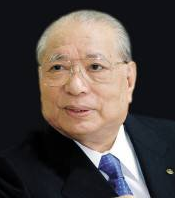 from a Japan-focused lay Buddhist organization into an international enterprise with a broad mandate in religion, politics, and culture. Under Ikeda’s leadership, Sōka Gakkai established official branches in Asia, Europe, North America, Brazil, and other parts of the globe. Under Ikeda, Sōka Gakkai founded its own accredited private school system, sub-organizations committed to supporting the arts, and other education- and culture-focused initiatives.
from a Japan-focused lay Buddhist organization into an international enterprise with a broad mandate in religion, politics, and culture. Under Ikeda’s leadership, Sōka Gakkai established official branches in Asia, Europe, North America, Brazil, and other parts of the globe. Under Ikeda, Sōka Gakkai founded its own accredited private school system, sub-organizations committed to supporting the arts, and other education- and culture-focused initiatives.
Sōka Gakkai continued radical growth in Japan under Ikeda’s leadership throughout the 1960s, powered by the organization’s mobilization in electoral politics through its party Kōmeitō (founded 1964) and a related focus on the goal of building a “national ordination platform” (kokuritsu kaidan). This platform, a special temple facility for ordinations, was to be erected by government decree to mark the completion of kōsen rufu , interpreted by Sōka Gakkai by this time to mean the conversion of one third of the population of Japan. From late 1965, the Gakkai membership focused on the project of constructing the Shōhondō, a massive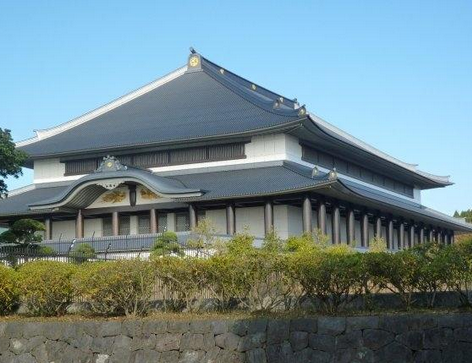 facility at the Nichiren Shōshū head temple Taisekiji to house the daigohonzon , the calligraphic mandala inscribed by Nichiren in 1279 that serves Sōka Gakkai and Nichiren Shōshū as their primary object of worship. The Shōhondō was referred to until the end of the decade by Shōshū and Gakkai leaders as a virtual realization of the “true ordination platform” (the honmon no kaidan), marking the completed task of converting the populace.
facility at the Nichiren Shōshū head temple Taisekiji to house the daigohonzon , the calligraphic mandala inscribed by Nichiren in 1279 that serves Sōka Gakkai and Nichiren Shōshū as their primary object of worship. The Shōhondō was referred to until the end of the decade by Shōshū and Gakkai leaders as a virtual realization of the “true ordination platform” (the honmon no kaidan), marking the completed task of converting the populace.
Growth stalled at the end of the 1960s, at a point when Sōka Gakkai and Kōmeitō were compelled to officially separate. This official split followed a scandal that began in November, 1969 over events that came to be known as the “problem over obstructing freedom of expression and the press” (genron shuppan bōgai mondai ). Fujiwara Hirotatsu (1921-1999), a Meiji University professor, published a book titled I Denounce Sōka Gakkai ( Sōka gakkai o kiru ). He claimed that attempts were made by prominent Kōmeitō politicians and Liberal Democratic Party Secretary General Tanaka Kakuei (1918-1993, later Prime Minister) to block publication. Press coverage of this scandal encouraged sales of Sōka gakkai o kiru and a flood of negative press for Sōka Gakkai.
In the wake of the I Denounce Sōka Gakkai scandal, Ikeda Daisaku announced the official separation of Sōka Gakkai and Kōmeitō  and a new Gakkai policy of “separation of politics and religion” (seikyō bunri ). The official separation of the religion and the political party served as a watershed moment for both organizations: Sōka Gakkai’s membership only grew by small amounts after this, and Kōmeitō suffered electoral losses throughout the following decade. Even after the official separation, devout Gakkai adherents have continued to regard electioneering on behalf of Kōmeitō candidates as part of their regular faith activities.
and a new Gakkai policy of “separation of politics and religion” (seikyō bunri ). The official separation of the religion and the political party served as a watershed moment for both organizations: Sōka Gakkai’s membership only grew by small amounts after this, and Kōmeitō suffered electoral losses throughout the following decade. Even after the official separation, devout Gakkai adherents have continued to regard electioneering on behalf of Kōmeitō candidates as part of their regular faith activities.
From the early 1970s, Sōka Gakkai moved away from its mission of aggressive expansion in favor of cultivating the generation of children born to first generation converts in discipleship under Ikeda Daisaku. On October 12, 1972, during ceremonies marking the opening of the completed Shōhondō at Taisekiji, Ikeda delivered a speech announcing the start of Sōka Gakkai’s “Phase Two,” describing a turn away from aggressive expansion toward envisioning the Gakkai as an international movement promoting peace through friendship and cultural exchange.
Sōka Gakkai’s official announcement of an inward turn did not deter critiques from outside the group. From March 1976, the tabloid Monthy Pen (Gekkan pen) began publishing a series of articles alleging liaisons between Ikeda and six women, including top Women’s Division leaders. Sōka Gakkai sued for defamation, and the Tokyo District Court ruled in its favor; Gekkan pen was forced to issue a published apology, and its publisher Kumabe Taizō served one year on probation. A recurring pattern of tabloid accusation followed by Gakkai lawsuit became an entrenched feature from this point, causing further damage to Sōka Gakkai’s public image, and the “women problem” (josei mondai) remained an angle of attack that journalists have continued to employ against Ikeda to the present.
From 1977, Ikeda began to clash openly with the Nichiren Shōshū priesthood. At several points during this year Ikeda delivered speeches and published essays in which he challenged the authority of the Nichiren Shōshū priesthood. In one of these, an essay titled “Lecture on the Heritage of the Ultimate Law of Life” (Shōji ichidaiji ketsumyakushō kōgi) that Sōka Gakkai reprinted in millions of pamphlets, Ikeda contended that Shōshū priestly claims to an exclusive lineage going back to the founder Nichiren were not superior to links Gakkai members forge to the Dharma by chanting namu-myōhō-renge-kyō. Extensive negotiations between the two organizations led to Sōka Gakkai reaffirming Nichiren Shōshū priestly lineage claims, and in 1979 Ikeda was compelled to step down from the post of third Gakkai president to take the position of Honorary President.
Distance between Sōka Gakkai and Nichiren Shōshū continued to widen throughout the 1980s, and by the middle of that decade the Shōshū priesthood found itself the uncomfortable elderly companion of a dynamic international organization led by a public intellectual who was more likely to speak of the Enlightenment of European philosophy than the enlightenment promised by Nichiren Buddhist doctrine. These years saw Sōka Gakkai grow increasingly internationally focused; concerned with world peace, culture, and education; centered on Ikeda’s authority; and distant from its Nichiren Shōshū parent organization.
In 1990, the second major conflict between Ikeda Daisaku and the Nichiren Shōshū priesthood erupted. Open acrimony between the Shōshū priesthood and the Sōka Gakkai leadership escalated through a series of missives between the two camps. The priesthood complained about speeches made by Ikeda in which he criticized Abe Nikken. Sōka Gakkai responded with lists of their own concerns about the treatment of their members by the priesthood. From early 1991, Sōka Gakkai began publishing articles in the Seikyō shinbun that were openly critical of Abe Nikken, and the organization began promoting funerals conducted by Gakkai leaders without Nichiren Shōshū priests. Tensions between the two leaderships reached a breaking point by the end of November, 1991 when Nichiren Shōshū excommunicated Sōka Gakkai; in one day, the sect expelled more than ninety-five percent of its parishioners.
Prevented from engaging directly with its principal object of worship enshrined at the Shōshū head temple, Sōka Gakkai after 1991 confirmed its identity as an organization committed entirely to Ikeda. In April, 2002, Sōka Gakkai issued new institutional regulations stipulating that Makiguchi, Toda, and Ikeda are to be known as the sandai kaichō (three generations of presidents), the “eternal mentors” ( eien no shidōsha ) who founded the movement; that the organization upholds the principle of shitei funi (the “indivisible bond of mentor and disciple”); and that the post of Sōka Gakkai president is purely administrative. Sōka Gakkai definitively curtailed the possibility of extending charismatic leadership past Ikeda Daisaku.
In recent years, Gakkai members have mostly come to learn about Nichiren Buddhism in the context of Ikeda’s writings, and dedicated adherents structure their lives around a busy calendar of large and small Gakkai events that serve as rededications of their discipleship under the Honorary President.
DOCTRINES/BELIEFS
Sōka Gakkai is commonly characterized as a lay movement within Nichiren Shōshū Buddhist tradition. However, as the history outlined above indicates, it is much more than a Buddhist organization and is instead best understood as heir to twin legacies: (1) a tradition of self-cultivation through the practice of Nichiren Shōshū Buddhism, and (2) intellectual currents that flourished in late nineteenth to early twentieth century Japan valorizing education, pedagogy, and humanism, inspired by modern Euro-American philosophy and traditions that fall under the general rubric of “culture.” These two legacies shape the commitments, expressive idioms, and combination of doctrines and practices Sōka Gakkai members uphold.
Members maintain traditional Buddhist practices in keeping with Nichiren Shōshū tradition. These include:
Chanting. Members intone morning and evening prayers in front of their home altars in a chanting performance called gongyō, literally “to exert oneself in practice.” The twice-daily chant includes Chapter Two, “Expedient Means” (Hōben), and sections of Chapter Sixteen, “Life Span” (Juryō), of the Lotus Sūtra. The sūtra sections are followed by repeated incantations of the title of the Lotus, called the daimoku, which consists of the seven syllables namu-myōhō-renge-kyō, and by silent prayers.
Reverence for the daigohonzon . This is the “great object of worship,” a calligraphic mandala said to have been inscribed by Nichiren on the twelfth day of the tenth month of 1279 for the sake of all humanity. Membership in Sōka Gakkai is confirmed by the reception of a gohonzon , a replica of the daigohonzon . Sōka Gakkai’s lack of access to the daigohonzon after November 1991 and the group’s practice since then of manufacturing gohonzon based on a replica produced in 1720 contribute to ongoing heated doctrinal controversies between the Gakkai and rival Nichiren groups, particularly Nichiren Shōshū and the Shōshū-based lay organization Fuji Taisekiji Kenshōkai.
Conversion activities known as shakubuku. Shakubuku can be translated as “break and subdue [attachment to inferior teachings].” It was promoted by Nichiren as the only practice appropriate for countries, such as Japan, that slander the dharma. Recent decades have seen Sōka Gakkai, especially its international wing SGI, encourage a move away from shakubuku in favor of shōju , the proselytizing method promoted in the Nichiren tradition of gentle suasion through reasoned argument. However, ordinary members in Japan rarely speak of converting others to Sōka Gakkai in anything other than terms of shakubuku , although interpretations of that term have mostly shifted from hard-sell tactics in the early postwar decades to less intense methods in recent years.
The mission of kōsen rufu , which calls for the spread of the Lotus in the time of mappō, the latter day of the Buddha’s Dharma. The term, which can be translated as “widely declare and spread [the truth of the Lotus Sūtra ],” is employed within Sōka Gakkai as a means of describing any activities that promote the growth of the institution.
Belief that the present age is the latter days of the Buddha’s Dharma (mappō). The three stages of history in East Asian Buddhist tradition are the age of shōbō , or “true Dharma”; the age of zōhō , or “semblance Dharma”; and the final age of mappō , understood to have begun in the year 1052. Sōka Gakkai members uphold Nichiren’s belief that the only means of salvation in mappō is to embrace the Lotus Sūtra and reject all other teachings as false (Stone 1999:383-84).
Reverence for Nichiren and his writings. Followers in the Nichiren Shōshū tradition, including members of Sōka Gakkai, regard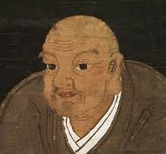 Nichiren as the earthly avatar of the eternal or original Buddha. As such, his writings are considered by Gakkai followers to bear scriptural authority surpassing even that of the sūtra s of the Buddha Śākyamuni.
Nichiren as the earthly avatar of the eternal or original Buddha. As such, his writings are considered by Gakkai followers to bear scriptural authority surpassing even that of the sūtra s of the Buddha Śākyamuni.
Though focus on this matter has diminished considerably within Sōka Gakkai since 1970, the group was greatly concerned with realizing the final of Nichiren’s Three Great Secret Dharmas (sandai hihō). These are (1) the honmon no daimoku , the title of the Lotus , namu-myōhō-renge-kyō ; (2) the honmon no honzon, or true object of worship, the calligraphic mandala with the daimoku inscribed at its center that Nichiren devised for his followers; and (3) the honmon no kaidan, or “true ordination platform,” a site for the ordination of clerics that would become the spiritual center for all people, marking the achievement of kōsen rufu , or the conversion of all people to exclusive worship of the Lotus . The first two of the Three Great Secret Dharmas were achieved by Nichiren himself, and the third remained a lofty and remote goal for Nichiren’s followers for centuries, that is, until Sōka Gakkai began to attract millions of converts in the years after the Second World War. Toda Jōsei moved Sōka Gakkai into electoral politics in the 1950s for the sake of realizing the third of the Three Great Secret Dharmas: securing state support for the construction of the honmon no kaidan, known in the modern era as the kokuritsu kaidan, or “national ordination platform,” was required, according to Nichiren Buddhist decree. Sōka Gakkai abandoned the kokuritsu kaidan objective after it separated officially from its political party Kōmeitō in 1970.
Though Nichiren Buddhism forms the core of Sōka Gakkai’s identity as a lay organization, the group’s founding as an educational reform movement concerned with pedagogy and culture guides the ethos and activities of members. In particular, members today define themselves as Gakkai adherents in terms of discipleship under Honorary President Ikeda Daisaku. They conceive of their practice as operating within an affective one-to-one relationship with Ikeda, and though they rarely meet with him directly, they constantly encourage one another to forge an “indivisible bond of mentor and disciple” (shitei funi) by formulating all of their personal objectives and accomplishments as dedications to the Honorary President.
Members are cultivated in reverence for Ikeda through constant immersion in Gakkai media. Maximally dedicated Gakkai members can receive most or even all of their information through the organization. Information is obtained through meetings and satellite broadcasts they attend at Culture Centers and through the daily newspaper Seikyō shinbun , the study magazine Daibyaku renge , videos produced by the production company Shinano Kikaku, and thousands of books, magazines, CDs, websites, and other sources. Today, members are most likely to encounter Nichiren’s writings and the Lotus Sūtra through transcribed speeches and essays by Ikeda. Culture Centers are decorated with Ikeda’s photographs and images of the historical figures he finds most inspiring; typically, apart from altars that enshrine the gohonzon , there is nothing traditionally “Buddhist” or even Japanese to be seen in a Gakkai building. Ikeda extols Napoleon, Ludwig van Beethoven, Martin Luther King Jr., the Mahātmā Gandhi, and other historical greats known for having realized their transcendent visions in the face of adversity. Members are inspired to model their own lives on the examples of these heroic figures, and constant immersion in Gakkai media encourages them to conflate the biographies of triumphant historical personages with that of Ikeda. Reverence for Ikeda is also cultivated by reading books authored by him, particularly The Human Revolution (Ningen kakumei) and its sequel The New Human Revolution (Shin ningen kakumei), serial novelized histories of Sōka Gakkai and its founding presidents that members regard as possessing de facto scriptural authority.
RITUALS/PRACTICES
In addition to twice-daily recitation of sections of the Lotus Sūtra and repetitions of namu-myōhō-renge-kyō , Gakkai members  engage in numerous other activities that make up ritual life in the group. These include:
engage in numerous other activities that make up ritual life in the group. These include:
Study meetings: Local Gakkai members meet at member homes not for Buddhist study per se but at zadankai , monthly “discussion meetings” or “study roundtables.” Members otherwise gather at Culture Centers for larger meetings and to attend broadcasts that include speeches by Honorary President Ikeda. Members will also attend many other meetings convened for the Gakkai sub-organizations to which they belong, such as the Married Women’s Division or the Young Men’s Division, and vocational groups such as the Doctor’s Division, the Educator’s Division, the Artist’s Division, or others.
Gathering subscriptions for Gakkai publications: Sōka Gakkai members regularly solicit friends, relatives, acquaintances, and each other to sign up to receive periodicals such as the newspaper Seikyō shinbun . The group calls the practice of soliciting for its newspaper “newspaper enlightenment” (shinbun keimō) or using the European (not the Buddhist) term for “enlightenment” ( keimō ) to celebrate the awakening of new readers.
Political campaigns: A major component of devoted members’ practice is electioneering on behalf of candidates for Kōmeitō or, on occasion, for its coalition partner the Liberal Democratic Party. Sōka Gakkai maintains Japan’s most powerful grassroots-level electioneering network, powered primarily by its Married Women’s Division, who gather votes for candidates in every election, from local town councils to races for seats in the National Diet. Though Sōka Gakkai and Kōmeitō are formally separate, most committed members regard campaigning for Kōmeitō as part of their faith-driven activities.
Visits to important Gakkai sites: Since 1991, when they were barred from pilgrimages to the daigohonzon at the Nichiren Shōshū head temple Taisekiji in Shizuoka Prefecture, members have taken to carrying out pilgrimages to places associated with the person of Ikeda Daisaku. These include the Sōka Gakkai administrative headquarters at Shinanomachi in central Tokyo, the tree-lined campus of Sōka University in Hachiōji, and the Tokyo Fuji Art Museum. Particularly committed adherents will make annual visits on significant dates in Ikeda’s biography, such as his birthday on January 2, and his date of conversion to Sōka Gakkai on August 24. These annual observances have come to replace the nenchū gyōji, or the “cycle of annual practices” maintained by the Gakkai’s temple-based Buddhist parent Nichiren Shōshū.
Cultural engagement: From the late 1950s, Gakkai members began to perform at mass events held in sports arenas, and from the 1960s into the early 2000s Culture Festivals (bunkasai) featuring thousands of ordinary members engaged in cast-of-thousands musical spectaculars were organized with some regularity. The last two decades has seen a decline in these mass events in favor of members attending exhibitions at Culture Centers, visiting the Tokyo Fuji Art Museum, and patronizing performances sponsored by the Min-on Concert Association. Young members also perform (primarily) Western classical music in orchestras, concert bands, and other ensembles administered by the Young Men’s Division Music Corps (Ongakutai) and the Young Women’s Division Fife-and-Drum Corps (Kotekitai).
Ritual reception of a gohonzon : In contrast to earlier eras, when converts were urged to convert to Sōka Gakkai immediately, aspiring members are now encouraged to practice gongyō for six months before they receive their own gohonzon replica in a ceremony called gojukai, to “take the precepts,” or uphold exclusive reverence for the gohonzon .
Funerals and memorials: Since 1991, members have been encouraged to have “friend funerals”( yūjinsō ) conducted by Gakkai administrators from the Liturgy Division (Gitenbu) who perform gongyō for the deceased and carry out other funerary duties formerly performed by Nichiren Shōshū priests.
Regardless of the nature of the Gakkai meeting, the beginnings and endings of small and large gatherings in the presence of an enshrined gohonzon are routinely marked by reciting the daimoku sanshō : three invocations of namu-myōhō-renge-kyō.
ORGANIZATION/LEADERSHIP
Sōka Gakkai maintains an elaborate bureaucratic administration that resembles that of a modern national government and its civil service. Honorary President Ikeda floats above a massive pyramidal structure topped by a president (currently sixth president Harada Minoru) who oversees more than five hundred vice-presidents, a board of regents, and many other paid administrators who in turn oversee the activities of the Gakkai’s many subdivisions. Members are grouped by age, marital status, gender, location, occupation, and many other demographic considerations. The primary sub-organizations are the Young Men’s and Young Women’s Divisions, the Married Women’s Division, and the Men’s Division. Children under the age of eighteen belong to the Future Division. Members across Japan belong to a vertical administrative hierarchy based in households (setai) that are organized into blocks (burokku), districts (chiku), chapters (shibu), regional headquarters (honbu), wards (ku or ken), and prefectures (ken), which are in turn administered by thirteen national districts; almost all of the administrative work ensuring the daily operation of these subdivisions is carried out by volunteer administrators. One active member may hold multiple volunteer administrative posts at different levels of the organization, from the block on upward, and each of these positions will entail numerous responsibilities. The most active members at the local level belong to the Married Women’s Division, and though the majority of regular attendees at meetings are women, membership in Sōka Gakkai’s administration, with the exception of the Future, Young Women’s, and Married Women’s Divisions, is restricted to men.
service. Honorary President Ikeda floats above a massive pyramidal structure topped by a president (currently sixth president Harada Minoru) who oversees more than five hundred vice-presidents, a board of regents, and many other paid administrators who in turn oversee the activities of the Gakkai’s many subdivisions. Members are grouped by age, marital status, gender, location, occupation, and many other demographic considerations. The primary sub-organizations are the Young Men’s and Young Women’s Divisions, the Married Women’s Division, and the Men’s Division. Children under the age of eighteen belong to the Future Division. Members across Japan belong to a vertical administrative hierarchy based in households (setai) that are organized into blocks (burokku), districts (chiku), chapters (shibu), regional headquarters (honbu), wards (ku or ken), and prefectures (ken), which are in turn administered by thirteen national districts; almost all of the administrative work ensuring the daily operation of these subdivisions is carried out by volunteer administrators. One active member may hold multiple volunteer administrative posts at different levels of the organization, from the block on upward, and each of these positions will entail numerous responsibilities. The most active members at the local level belong to the Married Women’s Division, and though the majority of regular attendees at meetings are women, membership in Sōka Gakkai’s administration, with the exception of the Future, Young Women’s, and Married Women’s Divisions, is restricted to men.
In addition to a modern rationalized bureaucracy overseen by a presidency, Sōka Gakkai maintains other administrative features that mirror the appurtenances of a nation-state. These include:
A Sōka Gakkai flag: A red, yellow, and blue tri-color modeled on European national flags that frequently features a lotus flower  drawn at the center. Gakkai territory is instantly recognizable in Japan when the flag hangs over a building, a member’s home, or a business run by an adherent.
drawn at the center. Gakkai territory is instantly recognizable in Japan when the flag hangs over a building, a member’s home, or a business run by an adherent.
Anthems: Gakkai members learn Sōka Gakkai songs and sing them at meetings. The songs serve as rallying cries that bind members to the group’s institutional memory, and almost all of these are military marches written for optimal performance by singing in unison over brass band accompaniment.
A Sōka Gakkai economy: The organization maintains a thriving internal economy based primarily on zaimu (literally “finances”), or monetary donations from members. Sōka Gakkai depends financially on the flow of billions of yen and material goods provided as gifts by members to the institution.
A media empire: Members receive news about the group’s activities, doctrinal teachings, guidance from Ikeda, and other forms of information from the visual, audio, literary, and other forms of media issued by the organization. They are also bonded to Sōka Gakkai media through quotidian practices such as delivering newspapers, soliciting new subscriptions, and filling their shelves, screens, and stereos with Gakkai texts, images, and sounds.
Schools: Since 1968, the group has built a respected private secular educational system from preschool up to Sōka University, and in recent years has added educational institutions overseas. Graduates from Sōka Gakkai educational institutions maintain lifelong ties, and in recent decades the organization has staffed the ranks of its paid administrative staff with graduates from its own schools.
Sōka Gakkai territory: The organization maintains thousands of Culture Centers and other facilities across Japan that are patrolled by trained special cadres, usually the Gajōkai (Fortress Protection) and Sōkahan (Value Creation Team) sub-groups of the Young Men’s Division.
No matter their level of commitment to the group’s administration or the extent to which they devote themselves to life within the nation-like structure of the group, Gakkai members perceive themselves to be in an affective direct relationship with Ikeda Daisaku, a relationship that can at times circumvent Sōka Gakkai’s massive bureaucracy.
ISSUES/CHALLENGES
As a vast, expansionist organization that came to dominate Japan’s religious landscape and make its presence felt in politics, education, publishing, and many other spheres, Sōka Gakkai has provoked many conflicts. Numbering among these are:
A reputation for aggressive proselytizing. Though the terms of shakubuku have changed considerably, from its interpretation under Toda as aggressive conversion of all to encouraging dialogue between friends today, Sōka Gakkai retains a reputation for intolerance of other faiths and requiring its members to proselytize.
Conflict with other religious organizations. Sōka Gakkai exploded to millions of exclusive adherents over a few short decades by converting followers of other religions. It was able to do this in part because of arguments it leveled against “false teachings” and what it regarded as heterodox forms of worship. Perhaps unsurprisingly, this approach led almost all other religious groups in Japan (including Buddhist organizations, Shintō-based groups, Christian denominations, and New Religions) to target Sōka Gakkai as their primary rival.
The most acute religious conflict Sōka Gakkai faces today is with Nichiren Shōshū. The years following the 1991 split have seen published accusations and hundreds of lawsuits define the relationship between the two organizations. Both groups have sought to purge themselves of each other’s influence; Nichiren Shōshū demolished the Shōhondō in 1998, and Sōka Gakkai denies the religious legitimacy of the Shōshū abbot. Sōka Gakkai’s Shōshū-connected rivals, including the lay group Fuji Taisekiji Kenshōkai, focus in particular on what they regard as the sacrilege of Gakkai members’ reverence for replicas made from the 1720 Nichikan transcription of the daigohonzon .
Political engagement. The Sōka Gakkai activity that attracts the majority of public opposition is its continuing support of Kōmeitō. Critics accuse Sōka Gakkai of violating Article 20 of the 1947 Japanese Constitution, which bars religious organizations from receiving privileges from the state or exercising political authority. During the 1950s and 60s, when Sōka Gakkai was pushing for the construction of the ordination platform by government decree, critics also accused the group of violating Article 89, which prevents the government from expending funds for the benefit of religious enterprises. Dropping the objective of constructing the ordination platform has made it easier for Sōka Gakkai to defend its position that supporting Kōmeitō does not violate the Constitution. Sōka Gakkai argues that it and its affiliated political party are officially separate organizations and reminds critics that the 1947 Constitution guarantees freedom of expression and freedom of assembly.
Reverence for Honorary President Ikeda. Outside observers note that Sōka Gakkai has transformed from an organization led by Ikeda to a group dedicated to Ikeda. The Gakkai’s Nichiren Buddhist practice is now framed as a means of refining the indivisible bond of mentor and disciple (shitei funi) encouraged within all its adherents. Critics employ the singular reverence Gakkai members maintain for their Honorary President as evidence that the group has moved away from its Nichiren Buddhist origins.
Sōka Gakkai faces a looming challenge occasioned by its singular focus on Ikeda Daisaku: when the Honorary President passes away, there will be no clear successor, and the organization’s bureaucrats may face difficulties exercising authority in the absence of a charismatic living leader.
As a result of these and other conflicts (see the timeline and founder/group history above), Sōka Gakkai has earned the most prominent and longest lasting negative public reputation of any religious group in contemporary Japan. Gakkai members live ordinary lives in mainstream Japanese society, yet many experience stigma in their schools, workplaces, and personal lives due to prevailing negative associations with their faith.
REFERENCES
Asahi Shinbun Aera Henshūbu, ed. 2011. Sōka gakkai kaibō. Tokyo: Asahi Shinbun.
Bessatsu Takarajima Henshūbu, ed. 2007. Ikeda Daisaku naki ato no Sōka gakkai. Tokyo: Takarajimasha.
Bethel, Dayle M. 1989. Education for Creative Living: Ideas and Proposals of Tsunesaburō Makiguchi. Translated by Alfred Birnbaum. Ames: Iowa State University Press.
Asano Hidemitsu. 1974. Watashi no mita sōka gakkai. Tokyo: Keizai Ōraisha.
Bessatsu Takarajima, ed. 1995. Tonari no sōka gakkai: uchigawa kara mita gakkai’in to iu shiawase. Tokyo: Takarajimasha.
Asano Hidemitsu. 1973. Makiguchi the Value Creator, Revolutionary Japanese Educator and Founder of Sōka Gakkai. New York: Weatherhill.
Ehrhardt, George, Axel Klein, Levi McLaughlin, and Steven Reed, eds. Forthcoming. Kōmeitō: Politics and Religion in Japan . Berkeley: Institute of East Asian Studies Japan Monograph Series.
Fisker-Nielsen, Anne Mette. 2012. Religion and Politics in Contemporary Japan: Soka Gakkai Youth and Komeito. London and New York: Routledge.
Fujiwara Hirotatsu. 1970. I Denounce Sōka Gakkai. Translated from the Japanese by Worth C. Grant. Tokyo: Nisshin Hōdō.
Fujiwara Hirotatsu . 1969. Kono nihon wo dō suru 2: sōka gakkai o kiru . Tokyo: Nisshin Hōdō Shuppanbu.
Higuma Takenori. 1970. Toda Jōsei / Sōka gakkai. Tokyo: Shin Jinbutsu Ōraisha.
Higuma Takenori. 1983. Gendai shūkyōron. Tokyo: Shiraishi Shoten.
Ikeda Daisaku. 1998-2013. Ikeda Daisaku zenshū (130+ volumes). Tokyo: Seikyō Shinbunsha.
Ikeda Daisaku. 1998-2013. Shin ningen kakumei. Tokyo: Seikyō Shinbunsha (25 volumes).
Ikeda Daisaku. 1971-1994. Ningen kakumei. Tokyo: Seikyō bunko (12 volumes).
Inose Yūri. 2011. Shinkō wa dono yō ni keishō sareru ka: Sōka Gakkai ni miru jisedai ikusei. Sapporo: Hokkaidō Daigaku Shuppankai.
Itō Tatsunori. 2006 (March). “Kenkyū shiryō: sōka gakkai to nichirenshū no ‘otaru montō’ saigen kiroku.” Gendai Shūkyō Kenkyū 40:630-77.
Itō Tatsunori. 2004 (March). “ Shakubuku kyōten kōshō.” Gendai Shūkyō Kenkyū 38:251-75.
Itō Tatsunori. 2003 (March). “Kenkyū shiryō: kaisei sareta sōka gakkai kaisoku henkō sareta ‘Sōka gakkai’ kisoku.” Gendai Shūkyō Kenkyū 37:154-225.
Kumagai Kazunori. 1978. Makiguchi Tsunesaburō. Tokyo: Daisan Bunmeisha.
Machacek, David and Bryan Wilson, eds. 2000. Global Citizens: The Sōka Gakkai Buddhist Movement in the World . Oxford: Oxford University Press.
Makiguchi Tsunesaburō. 1981-1987. Makiguchi Tsunesaburō zenshū (10 volumes). Tokyo: Daisan Bunmeisha.
McLaughlin, Levi. 2012. “Did Aum Change Everything? What Soka Gakkai Before, During, and After the Aum Shinrikyō Affair Tells Us About the Persistent ‘Otherness’ of New Religions in Japan.” Japanese Journal of Religious Studies 39:51-75.
McLaughlin, Levi. 2012. “Sōka Gakkai in Japan.” Pp. 269-307 in Handbook of Contemporary Japanese Religion, edited by Inken Prohl and John Nelson. Leiden: Brill.
McLaughlin, Levi. 2009. “Sōka Gakkai in Japan.” Ph.D. dissertation, Department of Religion, Princeton University.
Miyata Kōichi . 2000. Makiguchi Tsunesaburō: gokuchū no tatakai. Tokyo: Daisan Bunmeisha.
Miyata Kōichi . 1993 Makiguchi Tsunesaburō no shūkyō undō. Tokyo: Daisan Bunmeisha.
Murata, Kiyoaki. 1969. Japan’s New Buddhism: An Objective Account of Sōka Gakkai. New York: Walker / Weatherhill.
Nishino Tatsukichi. 1985. Denki Toda Jōsei. Tokyo: Daisan Bunmei.
Nishiyama Shigeru. 2004 (June). “Henbō suru sōka gakkai no konjaku.” Sekai :170-81.
Nishiyama Shigeru. 1998. “Naisei shūkyō no jiyūka to shūkyō yōshiki no kakushin: sengō dainiki no sōka gakkai no baai.” In Shūkyō to shakai seikatsu no shosō, edited by Numa Gishō hakushi koki kinen ronbunshū. Tokyo: Ryūbunkan.
Nishiyama Shigeru. 1989. “Seitōka no kiki to kyōgaku kakushin: ‘Shōhondō’ kansei ikō no ishiyama kyōgaku no baai.” Pp. 263-99 in Genkin Nihon bunka ni okeru dentō to henyō 5: genkin Nihon no “shinwa,” edited by Nakamaki Hirochika. Tokyo: Domesu Shuppan.
Nishiyama Shigeru. 1985. “Butsuryūkō to sōka gakkai ni miru kindai hokekei kyōdanhatten no nazo.” In Nichiren to hokekyō shinkō, edited by Tamura Yoshirō et.al. Tokyo: Yomiuri Shinbunsha.
Nishiyama Shigeru. 1975. “Nichiren shōshū sōka gakkai ni okeru ‘honmon kaidan’ ron no hensen: seijiteki shūkyō undō to shakai tōsei.” Pp. 241-75 in Nichirenshū no shomondai , edited by Nakao Takashi. Tokyo: Yūzankaku.
Roemer, Michael. 2009. “Religious Affiliation in Contemporary Japan: Untangling the Dilemma.” Review of Religious Research 50:298-320.
Saeki Yūtarō. 2000. Toda Jōsei to sono jidai . Tokyo: Mainichi Shinbunsha.
Shichiri Wajō. 2000. Ikeda Daisaku gensō no yabō: shōsetsu ningen kakumei hihan . Tokyo: Shin Nippon Shuppansha.
Shimada Hiromi. 2007. Kōmeitō vs. Sōka gakkai . Tokyo: Asahi Shinsho.
Shimada Hiromi. 2006. Sōka gakkai no jitsuryoku . Tokyo: Asahi Shinbunsha.
Shimada Hiromi. 2004. Sōka gakkai. Tokyo: Shinchō Shinsho.
Shimazono, Susumu. 2006. “Teikō no shūkyō / kyōryoku no shūkyō: senjiki sōka kyōiku gakkai no hen’yō.” Pp. 239-68 in Iwanami kōza ajia / taiheiyō sensō 6: nichijō seikatsu no naka no sōryokusen, edited by Kurazawa Aiko et. al. Tokyo: Iwanami Shoten.
Shimazono, Susumu. 2004. From Salvation to Spirituality: Popular Religious Movements in Modern Japan . Melbourne: Trans Pacific Press.
Sōka Gakkai. 1952. Shinpen Nichiren Daishōnin gosho zenshū. Tokyo: Sōka Gakkai.
Sōka Gakkai Kyōgakubu, ed. 1951 to 1969. Shakubuku kyōten. Tokyo: Sōka Gakkai.
Sōka Gakkai Mondai Kenkyūkai, ed. 2001. Sōka gakkai fujinbu: saikyō shūhyō gundan no kaibō. Tokyo: Gogatsu Shobō.
Sōka Gakkai Nenpyō Hensan Iinkai, ed. 1976. Sōka gakkai nenpyō. Tokyo: Seikyō Shinbunsha.
Sōka Gakkai Yonjū Shūnenshi Hensan Iinkai, ed. 1970. Sōka gakkai yonjū shūnenshi. Tokyo: Sōka Gakkai.
Stone, Jacqueline I. 2003. “By Imperial Edict and Shogunal Decree: Politics and the Issue of the Ordination Platform in Modern Lay Nichiren Buddhism.” Pp. 192-219 in Buddhism in the Modern World: Adaptions of an Ancient Tradition, edited by Steven Heine and Charles Prebish. Oxford: Oxford University Press.
Stone, Jacqueline I. 2003. “Nichiren’s Activist Heirs: Sōka Gakkai, Risshō Kōseikai, Nipponzan Myōhōji.” Pp. 63-94. In Action Dharma: New Studies in Engaged Buddhism, edited by Christopher Queen, Charles Prebish and Damien Keown. London: RoutledgeCurzon.
Stone, Jacqueline I. 1999. Original Enlightenment and the Transformation of Medieval Japanese Buddhism. Honolulu: University of Hawai‘i Press.
Stone, Jacqueline I. 1998. “Chanting the August Title of the Lotus Sūtra : Daimoku Practices in Classical and Medieval Japan.” Pp. 116-66 in Re-visioning “Kamakura” Buddhism, edited by Richard Payne. Honolulu: University of Hawai‘i Press.
Stone, Jacqueline I. 1994. “Rebuking the Enemies of the Lotus : Nichirenist Exclusivism in Historical Perspective.” Japanese Journal of Religious Studies 21:231-59.
Sugimori Kōji. 1976. Kenkyū / sōka gakkai. Tokyo: Jiyūsha.
Suzuki Hiroshi. 1970. Toshiteki sekai. Tokyo: Seishin Shobō.
Tamano Kazushi. 2008. Sōka gakkai no kenkyū. Tokyo: Kōdansha.
Toda Jōsei. 1981-1990. Toda Jōsei zenshū (9 volumes). Tokyo: Seikyō Shinbunsha.
Toda Jōsei. 1961. Toda Jōsei-sensei kōenshū jō / ge. Tokyo: Sōka Gakkai.
Toda Jōsei. 1961. Toda Jōsei-sensei ronbunshū. Tokyo: Sōka Gakkai.
Tōkyō Daigaku Hokekyō Kenkyūkai. 1975. Sōka gakkai no rinen to jissen. Tokyo: Daisan Bunmeisha.
Tōkyō Daigaku Hokekyō Kenkyūkai, ed. 1962. Nichiren shōshū sōka gakkai . Tokyo: Sankibō Busshorin.
White, James Wilson. 1970. The Sōkagakkai and Mass Society. Stanford: Stanford University Press.
Yamazaki Masatomo. 2001. “Gekkan Pen” jiken: Umoreteita shinjitsu. Tokyo: Daisan Shokan.
Publication Date:
1 December 2013
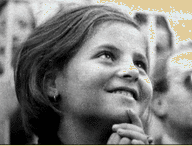 known as Bocco, a few hundred metres outside the main village. At about four o’clock in the afternoon she recalls sitting on the grass putting flowers into bunches. She felt someone lift her up and, thinking it was her aunt, turned round to see an unknown woman with a beautiful face. Angela was a sole visionary, as the other children did not share this experience (one of the characteristics of a successful and long-term apparition movement is clarity over whom the Madonna is speaking through; a multiplicity of voices may harm the reputation of the case). Angela immediately identified her vision as the Virgin Mary, and this was confirmed in the second apparition one month later on the July 4, 1947, when the vision declared herself to be Mary. This was further clarified on the August 4, when she referred to herself as “Mary, Help of Christians, Refuge of Sinners.” These are traditional titles of Mary.
known as Bocco, a few hundred metres outside the main village. At about four o’clock in the afternoon she recalls sitting on the grass putting flowers into bunches. She felt someone lift her up and, thinking it was her aunt, turned round to see an unknown woman with a beautiful face. Angela was a sole visionary, as the other children did not share this experience (one of the characteristics of a successful and long-term apparition movement is clarity over whom the Madonna is speaking through; a multiplicity of voices may harm the reputation of the case). Angela immediately identified her vision as the Virgin Mary, and this was confirmed in the second apparition one month later on the July 4, 1947, when the vision declared herself to be Mary. This was further clarified on the August 4, when she referred to herself as “Mary, Help of Christians, Refuge of Sinners.” These are traditional titles of Mary.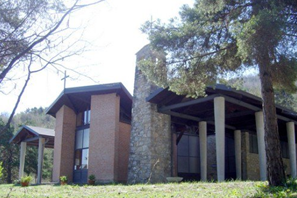
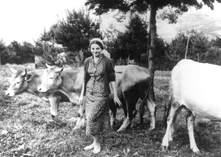 of their innocence, a view repeated by Cardinal Ratzinger, later Pope Benedict XVI, in The Message of Fatima (Bertone and Ratzinger 2000). However, my recent book, Our Lady of the Nations: Apparitions of Mary in 20th Century Catholic Europe asks whether putting child seers under the spotlight of public attention would be regarded as acceptable any longer given the developing concern about child welfare. Gilles Bouhours of Espis in France (where visions occurred to a group of children between 1946 and 1950) was only two years old when he was recognised as a visionary. Unsurprisingly, then, most prominent visionaries after the early 1980s (when the Medjugorje children began to have visions) have been adults. The revival of Catholic devotion due to apparitions to rural children while animal herding [Image at right] has been a standard motif in Europe across the centuries, but this phenomenon is disappearing now.
of their innocence, a view repeated by Cardinal Ratzinger, later Pope Benedict XVI, in The Message of Fatima (Bertone and Ratzinger 2000). However, my recent book, Our Lady of the Nations: Apparitions of Mary in 20th Century Catholic Europe asks whether putting child seers under the spotlight of public attention would be regarded as acceptable any longer given the developing concern about child welfare. Gilles Bouhours of Espis in France (where visions occurred to a group of children between 1946 and 1950) was only two years old when he was recognised as a visionary. Unsurprisingly, then, most prominent visionaries after the early 1980s (when the Medjugorje children began to have visions) have been adults. The revival of Catholic devotion due to apparitions to rural children while animal herding [Image at right] has been a standard motif in Europe across the centuries, but this phenomenon is disappearing now.
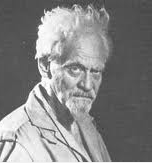 around whether or not that is true. Gardner contended that he was initiated into the New Forest Coven, by Dorothy Clutterbuck in 1939. Members of this coven claimed that theirs was a traditional Wiccan coven whose rituals and practices had been passed down since pre- Christian times.
around whether or not that is true. Gardner contended that he was initiated into the New Forest Coven, by Dorothy Clutterbuck in 1939. Members of this coven claimed that theirs was a traditional Wiccan coven whose rituals and practices had been passed down since pre- Christian times.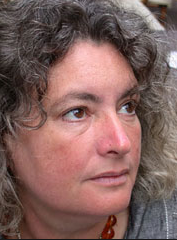 Wicca. She was initiated into the Fairie Tradition of Witchcraft and into Zsuzsanna Budapest’s Feminist Spirituality group. Starhawk’s first book, The Spiral Dance: The Rebirth of the Ancient Religion of the Great Goddess (1979), which brought together both threads of her training, sold over 300,000 copies.(Salomonsen 2002:9). During this same period the religion went from a mystery religion (one in which sacred and magical knowledge is reserved for initiates), with a focus on fertility, to an earth based religion (one that came to see the earth as a manifestation of the Goddess — alive and sacred) ( Clifton 2006:41). These two changes helped to make the religion appealing to those touched by feminism and environmentalism both in the United States and abroad. The religion’s spread was further aided by the publication of relatively inexpensive books and journals and the growth of the Internet.
Wicca. She was initiated into the Fairie Tradition of Witchcraft and into Zsuzsanna Budapest’s Feminist Spirituality group. Starhawk’s first book, The Spiral Dance: The Rebirth of the Ancient Religion of the Great Goddess (1979), which brought together both threads of her training, sold over 300,000 copies.(Salomonsen 2002:9). During this same period the religion went from a mystery religion (one in which sacred and magical knowledge is reserved for initiates), with a focus on fertility, to an earth based religion (one that came to see the earth as a manifestation of the Goddess — alive and sacred) ( Clifton 2006:41). These two changes helped to make the religion appealing to those touched by feminism and environmentalism both in the United States and abroad. The religion’s spread was further aided by the publication of relatively inexpensive books and journals and the growth of the Internet.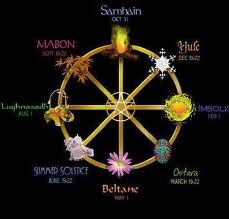 relationship between the Goddess and the God as portrayed in the rituals. The Goddess is viewed as eternal but changing from the maid, to mother, to crone; then, in the spiral of time, she returns in the spring as a young woman. The God is born of the mother in midwinter, becomes her consort in the spring, dies to ensure the growth of crops in the fall; then he is reborn at the winter solstice. The God is portrayed with horns, a sign of virility. The image is an old one that was converted to the image of the Devil within Christianity. All goddesses are viewed as aspects of the one Goddess just as all gods are believed to be aspects of the one God.
relationship between the Goddess and the God as portrayed in the rituals. The Goddess is viewed as eternal but changing from the maid, to mother, to crone; then, in the spiral of time, she returns in the spring as a young woman. The God is born of the mother in midwinter, becomes her consort in the spring, dies to ensure the growth of crops in the fall; then he is reborn at the winter solstice. The God is portrayed with horns, a sign of virility. The image is an old one that was converted to the image of the Devil within Christianity. All goddesses are viewed as aspects of the one Goddess just as all gods are believed to be aspects of the one God.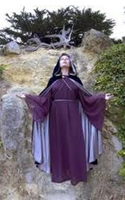 directed toward a cause, such as healing someone or finding a job, parking place, or rental apartment. It is believed that the energy that an individual sends out will return to her/him three-fold and hence the most common form of magic is healing magic. Performing healing both helps to show that the Witch has magical power and that s/he uses it for good ( Crowley 2000:151-56). For Wiccans the world is viewed as magical. It is commonly believed that the Goddess or the God may send an individual a sign or give them direction in life. These may come during a ritual or meditation or in the course of everyday life as people happen upon old friends or find something in the sand at the beach that they believe is of import. Magic therefore is a way of connecting with the divine and with nature. Magic is viewed as part of the natural world and indicative of individuals’ connection to nature, to one another, and to the divine.
directed toward a cause, such as healing someone or finding a job, parking place, or rental apartment. It is believed that the energy that an individual sends out will return to her/him three-fold and hence the most common form of magic is healing magic. Performing healing both helps to show that the Witch has magical power and that s/he uses it for good ( Crowley 2000:151-56). For Wiccans the world is viewed as magical. It is commonly believed that the Goddess or the God may send an individual a sign or give them direction in life. These may come during a ritual or meditation or in the course of everyday life as people happen upon old friends or find something in the sand at the beach that they believe is of import. Magic therefore is a way of connecting with the divine and with nature. Magic is viewed as part of the natural world and indicative of individuals’ connection to nature, to one another, and to the divine.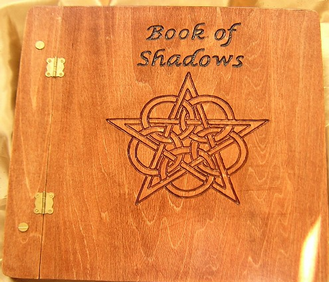
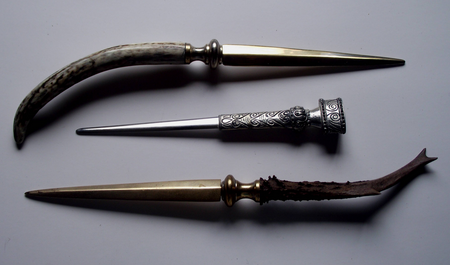 knife). Because Wiccans do not normally have churches, they need to create sacred space for the ritual in what is normally mundane space. This is done in covens by the High Priestess and High Priest walking around the circle while extending athames out in front of them and chanting. Participants visualize a blue or white light radiating up in a sphere to create a safe and sacred place. The High Priestess and High Priest then call in or invoke the watchtower, that is, the powers of the four directions (east, south, west and north) and the deities associated with each of those. They normally consecrate the circle and the participants with elements that are associated with each of these directions, which are placed on an altar in the center of the circle (Adler 1986:105-106). Altars are typically decorated to reflect the ritual being celebrated. For example, at Samhain, when death is celebrated as part of the cycle of life, pictures of deceased relatives and friends may decorate the altar; on May Day (May 1 st) there would be fresh flowers and fruit on the altar, symbolizing new life and fertility.
knife). Because Wiccans do not normally have churches, they need to create sacred space for the ritual in what is normally mundane space. This is done in covens by the High Priestess and High Priest walking around the circle while extending athames out in front of them and chanting. Participants visualize a blue or white light radiating up in a sphere to create a safe and sacred place. The High Priestess and High Priest then call in or invoke the watchtower, that is, the powers of the four directions (east, south, west and north) and the deities associated with each of those. They normally consecrate the circle and the participants with elements that are associated with each of these directions, which are placed on an altar in the center of the circle (Adler 1986:105-106). Altars are typically decorated to reflect the ritual being celebrated. For example, at Samhain, when death is celebrated as part of the cycle of life, pictures of deceased relatives and friends may decorate the altar; on May Day (May 1 st) there would be fresh flowers and fruit on the altar, symbolizing new life and fertility.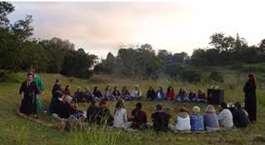 particular celebration is then conducted. The Circle also serves to contain energy that is built up during the rites until it is ready to be released in what is known as the Cone of Power. Singing, dancing, meditation, and chanting can all be used by Wiccans to raise power during a ritual. The cone of power is released for a purpose set by the Wiccan practitioners. There can be one shared purpose, such as healing a particular person or the rainforest, or each person may have his or her own particular magical purpose (Berger 1999:31). The ceremony ends with a cup of wine being raised and an athame dipped into it, symbolizing the union between the Goddess and the God. The wine is then passed around the Circle with the words “Blessed Be” and drunk by the practitioners. Cakes are blessed by the High Priestess and Priest; they are also passed around with the words “blessed be” and then eaten (Adler 1986:168). Sometimes rituals are conducted naked (skyclad) or in ritual robes, depending on the Wiccan tradition and the place the ritual is conducted. Outdoor or public rituals are normally conducted in robes or street clothes. At the end of the rites, the Circle is opened and the Watchtowers are symbolically taken down. Traditionally, people then share a meal, as eating is seen as needed to ground participants (i.e., help them leave a magical state and return to the mundane world).
particular celebration is then conducted. The Circle also serves to contain energy that is built up during the rites until it is ready to be released in what is known as the Cone of Power. Singing, dancing, meditation, and chanting can all be used by Wiccans to raise power during a ritual. The cone of power is released for a purpose set by the Wiccan practitioners. There can be one shared purpose, such as healing a particular person or the rainforest, or each person may have his or her own particular magical purpose (Berger 1999:31). The ceremony ends with a cup of wine being raised and an athame dipped into it, symbolizing the union between the Goddess and the God. The wine is then passed around the Circle with the words “Blessed Be” and drunk by the practitioners. Cakes are blessed by the High Priestess and Priest; they are also passed around with the words “blessed be” and then eaten (Adler 1986:168). Sometimes rituals are conducted naked (skyclad) or in ritual robes, depending on the Wiccan tradition and the place the ritual is conducted. Outdoor or public rituals are normally conducted in robes or street clothes. At the end of the rites, the Circle is opened and the Watchtowers are symbolically taken down. Traditionally, people then share a meal, as eating is seen as needed to ground participants (i.e., help them leave a magical state and return to the mundane world).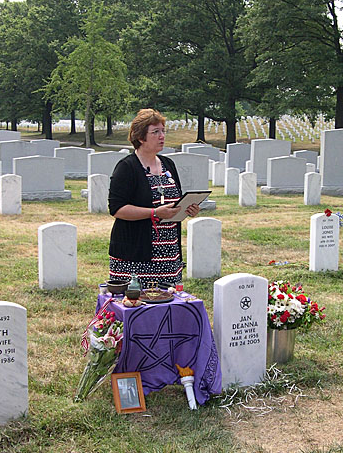 religious freedom. Wiccans have won a number of court cases resulting in the pentagram being an accepted symbol on graves in military cemeteries, and, recently in California, the recognition that Wiccan prisoners must be provided with their own clergy (Dolan 2013). Nonetheless, there continues to be discrimination. For example, on Sunday, February 17, 2013 Friends of Fox anchors mocked Wicca when reporting that the University of Missouri recognized all Wiccan holidays (in reality only the Sabbats were recognized). The three anchors went on to proclaim Wiccans were either dungeons and dragons players or twice divorced middle-aged women who live in rural areas, are mid-wives and like incense. This portrait is both demeaning and inaccurate as all research indicates that while most Wiccans are women, they tend to live in urban and suburban areas and are as likely to be young as middle aged, and tend to be better educated than the general American public (Berger 2003:25-34). After a protest lead mostly by Selena Fox of Circle Sanctuary, the network apologized. Nonetheless most Wiccan believe that negative images, such as the one presented on Fox news, are common and can affect individuals’ chances of promotions and their ability to take time from work to celebrate their religious holidays. However, there does appear to be a shift from Wiccans being seen as dangerous devil worshippers to being regarded as silly but harmless. Many Wiccans have been working to have their religion recognized as a legitimate and serious practice. They are active in inter-faith work and participate in the World Parliament of Religions.
religious freedom. Wiccans have won a number of court cases resulting in the pentagram being an accepted symbol on graves in military cemeteries, and, recently in California, the recognition that Wiccan prisoners must be provided with their own clergy (Dolan 2013). Nonetheless, there continues to be discrimination. For example, on Sunday, February 17, 2013 Friends of Fox anchors mocked Wicca when reporting that the University of Missouri recognized all Wiccan holidays (in reality only the Sabbats were recognized). The three anchors went on to proclaim Wiccans were either dungeons and dragons players or twice divorced middle-aged women who live in rural areas, are mid-wives and like incense. This portrait is both demeaning and inaccurate as all research indicates that while most Wiccans are women, they tend to live in urban and suburban areas and are as likely to be young as middle aged, and tend to be better educated than the general American public (Berger 2003:25-34). After a protest lead mostly by Selena Fox of Circle Sanctuary, the network apologized. Nonetheless most Wiccan believe that negative images, such as the one presented on Fox news, are common and can affect individuals’ chances of promotions and their ability to take time from work to celebrate their religious holidays. However, there does appear to be a shift from Wiccans being seen as dangerous devil worshippers to being regarded as silly but harmless. Many Wiccans have been working to have their religion recognized as a legitimate and serious practice. They are active in inter-faith work and participate in the World Parliament of Religions.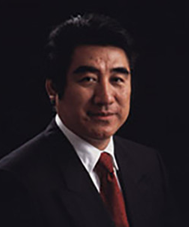 birth name is Handa Haruhisa 半田晴久, [Image at right] was born in Hyōgo Prefecture in 1951. At that time his father, Handa Toshiharu, was still a university student actively involved in left-wing political movements. According to Fukami’s column posted on World Mate’s website, his mother Shihoko, three years older than Toshiharu, was a relative of Toshiharu’s father (i.e. Fukami’s grandfather).
birth name is Handa Haruhisa 半田晴久, [Image at right] was born in Hyōgo Prefecture in 1951. At that time his father, Handa Toshiharu, was still a university student actively involved in left-wing political movements. According to Fukami’s column posted on World Mate’s website, his mother Shihoko, three years older than Toshiharu, was a relative of Toshiharu’s father (i.e. Fukami’s grandfather).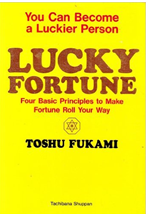 changed its name to Cosmo Mate. In 1986, Fukami published five books under the pseudonym Fukami Seizan, which enhanced his profile as a leader of the movement. His second book Kyōun 強運 (Fukami 1986b), whose English-edition is entitled Lucky Fortune, [Image at right] sold especially well (According to Tachibana Publishing, a publishing firm established in 1989 by Fukami, more than 1,700,000 copies of the book have been sold). Consequently Cosmo Mate showed rapid growth from the late 1980s to the early 1990s. During this period some other NRMs, such as Aum Shinrikyō and Kōfuku no Kagaku, began to be active in Tokyo and they, along with Cosmo Mate, became increasingly visible and attracted media and public attention. For example, in its January 1993 issue, Bungei Shunj ū , one of the most popular, opinion-shaping magazines in Japan, selected fifty potential reformers from a variety of fields, two of whom were Fukami and the Aum founder, Asahara Shōkō.
changed its name to Cosmo Mate. In 1986, Fukami published five books under the pseudonym Fukami Seizan, which enhanced his profile as a leader of the movement. His second book Kyōun 強運 (Fukami 1986b), whose English-edition is entitled Lucky Fortune, [Image at right] sold especially well (According to Tachibana Publishing, a publishing firm established in 1989 by Fukami, more than 1,700,000 copies of the book have been sold). Consequently Cosmo Mate showed rapid growth from the late 1980s to the early 1990s. During this period some other NRMs, such as Aum Shinrikyō and Kōfuku no Kagaku, began to be active in Tokyo and they, along with Cosmo Mate, became increasingly visible and attracted media and public attention. For example, in its January 1993 issue, Bungei Shunj ū , one of the most popular, opinion-shaping magazines in Japan, selected fifty potential reformers from a variety of fields, two of whom were Fukami and the Aum founder, Asahara Shōkō.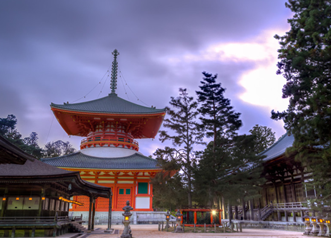 Prefecture. The movement also has fifteen Eria Honbu エリア本部 (area or local headquarters) that are located mainly in large cities in Japan, as well as some 190 local branch offices scattered throughout Japan. These branch offices are operated by its local members largely on a voluntary basis, while Eria Honbu or local headquarters are managed by World Mate’s staff members. It appears, therefore, that these local headquarters play a crucial role in making local branch leaders understand, and carry out, World Mate’s policies.
Prefecture. The movement also has fifteen Eria Honbu エリア本部 (area or local headquarters) that are located mainly in large cities in Japan, as well as some 190 local branch offices scattered throughout Japan. These branch offices are operated by its local members largely on a voluntary basis, while Eria Honbu or local headquarters are managed by World Mate’s staff members. It appears, therefore, that these local headquarters play a crucial role in making local branch leaders understand, and carry out, World Mate’s policies.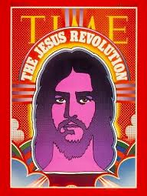 (Lofland and Richardson 1984:32-39); among them were Shiloh Youth Revival Centers, at first known as the “House of Miracles,” and later as “Shiloh” to its adherents (Di Sabatino 1994; Goldman 1995; Isaacson 1995; Richardson et al. 1979; Stewart 1992; Taslimi et al. 1991). Shiloh was one of the largest, if not the largest, in membership of the North American Christian (or any other religious) communes established during and shortly after the 1960’s hippie era. Internal estimates of those who passed through Shiloh’s 180 communal portals ranged as high as 100,000; the group claimed about 1,500 members in 37 communes and 20 churches or “fellowships” in early 1978. Bodenhausen, drawing on Shiloh’s internal records, reported 11,269 visits and 168 conversions during a five-week period in 1977. Shiloh embodied a hippie-youth vanguard of the post-war shift to Evangelical Protestantism in mid-to-late twentieth century North America.
(Lofland and Richardson 1984:32-39); among them were Shiloh Youth Revival Centers, at first known as the “House of Miracles,” and later as “Shiloh” to its adherents (Di Sabatino 1994; Goldman 1995; Isaacson 1995; Richardson et al. 1979; Stewart 1992; Taslimi et al. 1991). Shiloh was one of the largest, if not the largest, in membership of the North American Christian (or any other religious) communes established during and shortly after the 1960’s hippie era. Internal estimates of those who passed through Shiloh’s 180 communal portals ranged as high as 100,000; the group claimed about 1,500 members in 37 communes and 20 churches or “fellowships” in early 1978. Bodenhausen, drawing on Shiloh’s internal records, reported 11,269 visits and 168 conversions during a five-week period in 1977. Shiloh embodied a hippie-youth vanguard of the post-war shift to Evangelical Protestantism in mid-to-late twentieth century North America.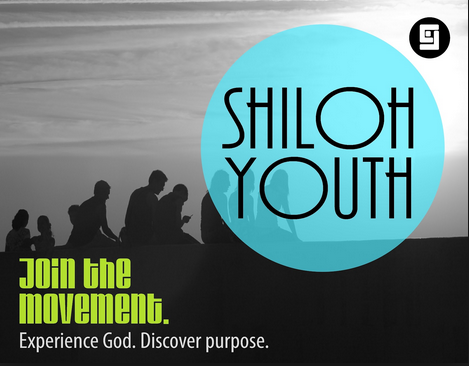 resulted in renaming the movement “Shiloh,” by establishing a large rural commune in Dexter, Oregon, and by working with leaders of other Pentecostal denominations (the Open Bible Standard churches, and Faith Center, a small Foursquare church in Eugene). In 1971, sociologist James T. Richardson lead a team of graduate students to Shiloh’s “Berry Farm” in Cornelius, Oregon to study the group, efforts that continued in a series of contacts over the 1970s and became fully realized in Organized Miracles (1979). One unanticipated consequence was that an article published by his team in Psychology Today stirred a wave of seekers who wrote to the sociologists asking how to join.
resulted in renaming the movement “Shiloh,” by establishing a large rural commune in Dexter, Oregon, and by working with leaders of other Pentecostal denominations (the Open Bible Standard churches, and Faith Center, a small Foursquare church in Eugene). In 1971, sociologist James T. Richardson lead a team of graduate students to Shiloh’s “Berry Farm” in Cornelius, Oregon to study the group, efforts that continued in a series of contacts over the 1970s and became fully realized in Organized Miracles (1979). One unanticipated consequence was that an article published by his team in Psychology Today stirred a wave of seekers who wrote to the sociologists asking how to join. so gifted, leader teams, and Quaker-like testimony-sharing-and-prayer meetings, to “Bible Studies” led by internally-credentialed authoritarian leaders. The original leadership consisted of four married couples: John and Jacquelyn Higgins, Lonnie and Connie Frisbee, Randy and Sue Morich, Stan and Gayle Joy (Higgins 1973; 1974a; 1974b). The Frisbees, Morichs, and Stan Joy left Shiloh by 1970; Jacquelyn Higgins left in the mid-1970s. Only Gayle Joy and John Higgins continued, and both remarried. This allowed Higgins to consolidate his authority.
so gifted, leader teams, and Quaker-like testimony-sharing-and-prayer meetings, to “Bible Studies” led by internally-credentialed authoritarian leaders. The original leadership consisted of four married couples: John and Jacquelyn Higgins, Lonnie and Connie Frisbee, Randy and Sue Morich, Stan and Gayle Joy (Higgins 1973; 1974a; 1974b). The Frisbees, Morichs, and Stan Joy left Shiloh by 1970; Jacquelyn Higgins left in the mid-1970s. Only Gayle Joy and John Higgins continued, and both remarried. This allowed Higgins to consolidate his authority.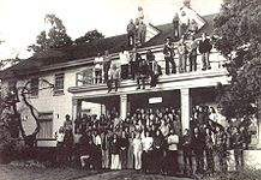 challenge. Secondary to this was the provision of nutritious food. Twenty-something Shiloh leaders found themselves thrust into the role of caring for large numbers of people. In response, Shiloh developed its Shiloh Christian Communal Cooking Book with recipes for five, 25, and 50 servings, organized dumpster diving and produce runs to recycle food, applied for USDA surplus food, and planted community gardens. Following a “prophetic” understanding that “agriculture was to be the foundation of the ministry,” Shiloh purchased an orchard, pastures, a goat dairy and livestock; leased a commercial berry farm; ran a commercial fishing boat; and developed a cannery to provide both income and food to distribute throughout its communal system.
challenge. Secondary to this was the provision of nutritious food. Twenty-something Shiloh leaders found themselves thrust into the role of caring for large numbers of people. In response, Shiloh developed its Shiloh Christian Communal Cooking Book with recipes for five, 25, and 50 servings, organized dumpster diving and produce runs to recycle food, applied for USDA surplus food, and planted community gardens. Following a “prophetic” understanding that “agriculture was to be the foundation of the ministry,” Shiloh purchased an orchard, pastures, a goat dairy and livestock; leased a commercial berry farm; ran a commercial fishing boat; and developed a cannery to provide both income and food to distribute throughout its communal system.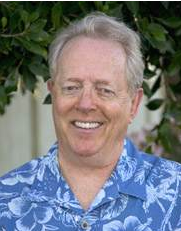 leading Shiloh in an unacceptable direction. However, the 1978 coup d’état that followed did derail the movement with the result that hundreds of communards suddenly had to find their way in the world.
leading Shiloh in an unacceptable direction. However, the 1978 coup d’état that followed did derail the movement with the result that hundreds of communards suddenly had to find their way in the world.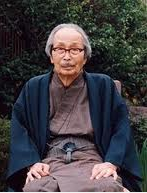 Kōbe. He was adopted by his aunt who had the financial means of sending him to school. He graduated from Waseda High School as the best student in the literature program and enrolled in the English Literature Department of the prestigious Waseda University. After a dramatic love affair, he had to discontinue his academic career and take on various poorly paying jobs. He contracted a venereal disease and, searching for a cure, became interested in traditional and spiritual healing as well as in hypnotism and other spiritual practices that were quite fashionable at that time (Biographies of Taniguchi can be found in Seimei no jissō volumes 19 and 20 and Ono 1995).
Kōbe. He was adopted by his aunt who had the financial means of sending him to school. He graduated from Waseda High School as the best student in the literature program and enrolled in the English Literature Department of the prestigious Waseda University. After a dramatic love affair, he had to discontinue his academic career and take on various poorly paying jobs. He contracted a venereal disease and, searching for a cure, became interested in traditional and spiritual healing as well as in hypnotism and other spiritual practices that were quite fashionable at that time (Biographies of Taniguchi can be found in Seimei no jissō volumes 19 and 20 and Ono 1995).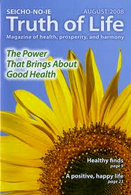 immediately took up his pen and started his magazine Seichō no Ie , official publication of whose first issue in March, 1930 is now regarded as the date of foundation of the new religion Seichō no Ie. Between November, 1929 and September, 1933 Taniguchi received twenty nine divine revelations informing him about the nature of the divine and of human beings, thus laying the foundations of some of Seichō no Ie’s key practices and doctrines (Seichō no Ie Honbu 1980:246-78).
immediately took up his pen and started his magazine Seichō no Ie , official publication of whose first issue in March, 1930 is now regarded as the date of foundation of the new religion Seichō no Ie. Between November, 1929 and September, 1933 Taniguchi received twenty nine divine revelations informing him about the nature of the divine and of human beings, thus laying the foundations of some of Seichō no Ie’s key practices and doctrines (Seichō no Ie Honbu 1980:246-78). founded by widely read, well-educated men with a logically written, abstract yet easy-to-understand doctrine. Taniguchi Masaharu had enjoyed literature and read widely on topics, including Freud, Western theology and philosophies as well as on traditional and scientific schools of medicine (all of which eventually contributed to the formation of Seichō no Ie’s doctrine).
founded by widely read, well-educated men with a logically written, abstract yet easy-to-understand doctrine. Taniguchi Masaharu had enjoyed literature and read widely on topics, including Freud, Western theology and philosophies as well as on traditional and scientific schools of medicine (all of which eventually contributed to the formation of Seichō no Ie’s doctrine).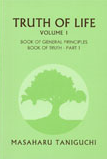 rendered in English as Truth of Life , written in 1932. Seimei no jissō has been translated fully into Portuguese ( A Verdade da Vida ), but only partially into English and even less into other languages. Taniguchi’s second series of books is his eleven-volume Shinri ( 『真理』 , The Truth ) which is an introduction to the doctrine expounded in Seimei no jissō and was first published between 1954 and 1958. Kanro no hōu 『甘露の法雨』 , officially translated into English as Nectarean Shower of Holy Doctrines , is the most important of Seichō no Ie’s four holy sutras. It has been translated into several languages and has recently been published in Braille. Kanro no hōu was divinely revealed to Taniguchi Masaharu by the Bodhisattva Kannon on December 1, 1930. Carrying, reading or copying the sutra are said to evoke miracles, such as unexpected recovery from illnesses and protection during accidents.
rendered in English as Truth of Life , written in 1932. Seimei no jissō has been translated fully into Portuguese ( A Verdade da Vida ), but only partially into English and even less into other languages. Taniguchi’s second series of books is his eleven-volume Shinri ( 『真理』 , The Truth ) which is an introduction to the doctrine expounded in Seimei no jissō and was first published between 1954 and 1958. Kanro no hōu 『甘露の法雨』 , officially translated into English as Nectarean Shower of Holy Doctrines , is the most important of Seichō no Ie’s four holy sutras. It has been translated into several languages and has recently been published in Braille. Kanro no hōu was divinely revealed to Taniguchi Masaharu by the Bodhisattva Kannon on December 1, 1930. Carrying, reading or copying the sutra are said to evoke miracles, such as unexpected recovery from illnesses and protection during accidents.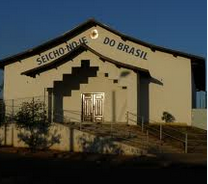 with Sōka Gakkai it is also the largest Japanese new religion outside of Japan. Missionary activities in Brazil began in the mid-1950s when members immigrating to Brazil transmitted their faith to fellow Japanese immigrants. After Taniguchi’s visit to Brazil in 1963, however, missionary efforts turned to non-Japanese as well. Recently, Seichō no Ie’s membership in Brazil (the Brazilian headquarters are Seichō no Ie’s missionary headquarters for all of Latin America) has been estimated at around half a million members, eighty to ninety per cent of whom have no Japanese ancestry ( Carpenter and Roof 1995; Maeyama 1992; Shimazono 1991 ). Although missions to Hawai’i and other parts of the United States began before the Pacific War, membership figures do not compare to those in Brazil and most members are of Japanese descent. There are Seichō no Ie branches in several European countries, such as Germany, France, Great Britain and Portugal. However, they have only a few members, many of whom are Japanese students or employees or of Brazilian origin (Clarke 2000:290-93).
with Sōka Gakkai it is also the largest Japanese new religion outside of Japan. Missionary activities in Brazil began in the mid-1950s when members immigrating to Brazil transmitted their faith to fellow Japanese immigrants. After Taniguchi’s visit to Brazil in 1963, however, missionary efforts turned to non-Japanese as well. Recently, Seichō no Ie’s membership in Brazil (the Brazilian headquarters are Seichō no Ie’s missionary headquarters for all of Latin America) has been estimated at around half a million members, eighty to ninety per cent of whom have no Japanese ancestry ( Carpenter and Roof 1995; Maeyama 1992; Shimazono 1991 ). Although missions to Hawai’i and other parts of the United States began before the Pacific War, membership figures do not compare to those in Brazil and most members are of Japanese descent. There are Seichō no Ie branches in several European countries, such as Germany, France, Great Britain and Portugal. However, they have only a few members, many of whom are Japanese students or employees or of Brazilian origin (Clarke 2000:290-93). (Taniguchi M. and J. 2010 and Seichō no Ie online e ). The main temple in Nagasaki primarily serves ceremonial functions and contains the main shrine dedicated to Sumiyoshi Daijin, a Shintō deity said to “protect the state and purify the universe” ( Shūkyō Hōjin Seichō no Ie Sōhonzan online d) . The third religious center is the Additional Main Temple in Uji, near Kyoto, which focuses on the veneration of members’ ancestors and the care for stillborn or aborted babies. Hence it includes the main ancestral shrine (Fieldwork Observations; and Seichō no Ie Uji Bekkaku Honzan online a) . Additionally, Seichō no Ie has 129 hierarchically structured regional and local branches in Japan ( Seich<o no Ie online d ). It runs its own publishing company, Nihon Kyōbunsha, and a young women’s boarding school ( Seichō no Ie Yōshin Joshi Gakuen), whose educational focus lies on Seichō no Ie’s scriptures, on housewifely skills such as childcare and nutrition, on artistic courses such as music and traditional Japanese arts, and on basic office skills ( Seichō no Ie Yōshin Joshi Gakuen online ).
(Taniguchi M. and J. 2010 and Seichō no Ie online e ). The main temple in Nagasaki primarily serves ceremonial functions and contains the main shrine dedicated to Sumiyoshi Daijin, a Shintō deity said to “protect the state and purify the universe” ( Shūkyō Hōjin Seichō no Ie Sōhonzan online d) . The third religious center is the Additional Main Temple in Uji, near Kyoto, which focuses on the veneration of members’ ancestors and the care for stillborn or aborted babies. Hence it includes the main ancestral shrine (Fieldwork Observations; and Seichō no Ie Uji Bekkaku Honzan online a) . Additionally, Seichō no Ie has 129 hierarchically structured regional and local branches in Japan ( Seich<o no Ie online d ). It runs its own publishing company, Nihon Kyōbunsha, and a young women’s boarding school ( Seichō no Ie Yōshin Joshi Gakuen), whose educational focus lies on Seichō no Ie’s scriptures, on housewifely skills such as childcare and nutrition, on artistic courses such as music and traditional Japanese arts, and on basic office skills ( Seichō no Ie Yōshin Joshi Gakuen online ). volume of his collected essays, System of Value-Creating Educational Study ( Sōka kyōikugaku taikei ), marking the start of the Value Creation Education Study Association (Sōka Kyōiku Gakkai), Sōka Gakkai’s predecessor. Makiguchi was born in 1871 in what is now Niigata Prefecture in northeastern Japan, but he moved to the northern island of Hokkaido at the age of thirteen, where he was raised and eventually educated as an elementary school teacher. In 1901, he moved with his wife and children from the Hokkaido city of Sapporo to Tokyo, where he embarked on a career teaching at a series of Tokyo elementary schools. He also collaborated with intellectuals concerned with educational reform as he published books and essays. From 1910, Makiguchi joined the Kyōdokai, or Home Town Association, a research group engaged in ethnology and surveys of local culture in rural areas; the group included the famed folklorist Yanagita Kunio (1875-1962) and internationally renowned educator Nitobe Inazō (1862-1933). Thanks to scholarly engagements in these circles and through his own research, Makiguchi’s ideas were influenced by educational and philosophical trends, including neo-Kantian thought and pragmatism, which moved from Europe and the United States into Japan around the turn of the twentieth century.
volume of his collected essays, System of Value-Creating Educational Study ( Sōka kyōikugaku taikei ), marking the start of the Value Creation Education Study Association (Sōka Kyōiku Gakkai), Sōka Gakkai’s predecessor. Makiguchi was born in 1871 in what is now Niigata Prefecture in northeastern Japan, but he moved to the northern island of Hokkaido at the age of thirteen, where he was raised and eventually educated as an elementary school teacher. In 1901, he moved with his wife and children from the Hokkaido city of Sapporo to Tokyo, where he embarked on a career teaching at a series of Tokyo elementary schools. He also collaborated with intellectuals concerned with educational reform as he published books and essays. From 1910, Makiguchi joined the Kyōdokai, or Home Town Association, a research group engaged in ethnology and surveys of local culture in rural areas; the group included the famed folklorist Yanagita Kunio (1875-1962) and internationally renowned educator Nitobe Inazō (1862-1933). Thanks to scholarly engagements in these circles and through his own research, Makiguchi’s ideas were influenced by educational and philosophical trends, including neo-Kantian thought and pragmatism, which moved from Europe and the United States into Japan around the turn of the twentieth century. and made his way to the imperial capital to pursue his fortunes in teaching. Even after he left the teaching profession in late 1922, Toda remained beholden to his mentor Makiguchi, and he attributed his subsequent success in business to Makiguchi’s teachings. Toda alone demonstrated absolute commitment to Makiguchi by refusing to bow to the Japanese state’s pressure to recant his Nichiren Shōshū beliefs. While in prison, Toda experienced a vision in which he joined the innumerable Bodhisattvas of the Earth ( jiyu no bosatsu ) at Vulture Peak where the Buddha Śākyamuni delivers the Lotus Sūtra . He interpreted this revelation as an awakening to the sacred task of continuing his master Makiguchi’s mission to propagate Nichiren Shōshū Buddhism.
and made his way to the imperial capital to pursue his fortunes in teaching. Even after he left the teaching profession in late 1922, Toda remained beholden to his mentor Makiguchi, and he attributed his subsequent success in business to Makiguchi’s teachings. Toda alone demonstrated absolute commitment to Makiguchi by refusing to bow to the Japanese state’s pressure to recant his Nichiren Shōshū beliefs. While in prison, Toda experienced a vision in which he joined the innumerable Bodhisattvas of the Earth ( jiyu no bosatsu ) at Vulture Peak where the Buddha Śākyamuni delivers the Lotus Sūtra . He interpreted this revelation as an awakening to the sacred task of continuing his master Makiguchi’s mission to propagate Nichiren Shōshū Buddhism. from a Japan-focused lay Buddhist organization into an international enterprise with a broad mandate in religion, politics, and culture. Under Ikeda’s leadership, Sōka Gakkai established official branches in Asia, Europe, North America, Brazil, and other parts of the globe. Under Ikeda, Sōka Gakkai founded its own accredited private school system, sub-organizations committed to supporting the arts, and other education- and culture-focused initiatives.
from a Japan-focused lay Buddhist organization into an international enterprise with a broad mandate in religion, politics, and culture. Under Ikeda’s leadership, Sōka Gakkai established official branches in Asia, Europe, North America, Brazil, and other parts of the globe. Under Ikeda, Sōka Gakkai founded its own accredited private school system, sub-organizations committed to supporting the arts, and other education- and culture-focused initiatives. facility at the Nichiren Shōshū head temple Taisekiji to house the daigohonzon , the calligraphic mandala inscribed by Nichiren in 1279 that serves Sōka Gakkai and Nichiren Shōshū as their primary object of worship. The Shōhondō was referred to until the end of the decade by Shōshū and Gakkai leaders as a virtual realization of the “true ordination platform” (the honmon no kaidan), marking the completed task of converting the populace.
facility at the Nichiren Shōshū head temple Taisekiji to house the daigohonzon , the calligraphic mandala inscribed by Nichiren in 1279 that serves Sōka Gakkai and Nichiren Shōshū as their primary object of worship. The Shōhondō was referred to until the end of the decade by Shōshū and Gakkai leaders as a virtual realization of the “true ordination platform” (the honmon no kaidan), marking the completed task of converting the populace. and a new Gakkai policy of “separation of politics and religion” (seikyō bunri ). The official separation of the religion and the political party served as a watershed moment for both organizations: Sōka Gakkai’s membership only grew by small amounts after this, and Kōmeitō suffered electoral losses throughout the following decade. Even after the official separation, devout Gakkai adherents have continued to regard electioneering on behalf of Kōmeitō candidates as part of their regular faith activities.
and a new Gakkai policy of “separation of politics and religion” (seikyō bunri ). The official separation of the religion and the political party served as a watershed moment for both organizations: Sōka Gakkai’s membership only grew by small amounts after this, and Kōmeitō suffered electoral losses throughout the following decade. Even after the official separation, devout Gakkai adherents have continued to regard electioneering on behalf of Kōmeitō candidates as part of their regular faith activities. Nichiren as the earthly avatar of the eternal or original Buddha. As such, his writings are considered by Gakkai followers to bear scriptural authority surpassing even that of the sūtra s of the Buddha Śākyamuni.
Nichiren as the earthly avatar of the eternal or original Buddha. As such, his writings are considered by Gakkai followers to bear scriptural authority surpassing even that of the sūtra s of the Buddha Śākyamuni. engage in numerous other activities that make up ritual life in the group. These include:
engage in numerous other activities that make up ritual life in the group. These include: service. Honorary President Ikeda floats above a massive pyramidal structure topped by a president (currently sixth president Harada Minoru) who oversees more than five hundred vice-presidents, a board of regents, and many other paid administrators who in turn oversee the activities of the Gakkai’s many subdivisions. Members are grouped by age, marital status, gender, location, occupation, and many other demographic considerations. The primary sub-organizations are the Young Men’s and Young Women’s Divisions, the Married Women’s Division, and the Men’s Division. Children under the age of eighteen belong to the Future Division. Members across Japan belong to a vertical administrative hierarchy based in households (setai) that are organized into blocks (burokku), districts (chiku), chapters (shibu), regional headquarters (honbu), wards (ku or ken), and prefectures (ken), which are in turn administered by thirteen national districts; almost all of the administrative work ensuring the daily operation of these subdivisions is carried out by volunteer administrators. One active member may hold multiple volunteer administrative posts at different levels of the organization, from the block on upward, and each of these positions will entail numerous responsibilities. The most active members at the local level belong to the Married Women’s Division, and though the majority of regular attendees at meetings are women, membership in Sōka Gakkai’s administration, with the exception of the Future, Young Women’s, and Married Women’s Divisions, is restricted to men.
service. Honorary President Ikeda floats above a massive pyramidal structure topped by a president (currently sixth president Harada Minoru) who oversees more than five hundred vice-presidents, a board of regents, and many other paid administrators who in turn oversee the activities of the Gakkai’s many subdivisions. Members are grouped by age, marital status, gender, location, occupation, and many other demographic considerations. The primary sub-organizations are the Young Men’s and Young Women’s Divisions, the Married Women’s Division, and the Men’s Division. Children under the age of eighteen belong to the Future Division. Members across Japan belong to a vertical administrative hierarchy based in households (setai) that are organized into blocks (burokku), districts (chiku), chapters (shibu), regional headquarters (honbu), wards (ku or ken), and prefectures (ken), which are in turn administered by thirteen national districts; almost all of the administrative work ensuring the daily operation of these subdivisions is carried out by volunteer administrators. One active member may hold multiple volunteer administrative posts at different levels of the organization, from the block on upward, and each of these positions will entail numerous responsibilities. The most active members at the local level belong to the Married Women’s Division, and though the majority of regular attendees at meetings are women, membership in Sōka Gakkai’s administration, with the exception of the Future, Young Women’s, and Married Women’s Divisions, is restricted to men. drawn at the center. Gakkai territory is instantly recognizable in Japan when the flag hangs over a building, a member’s home, or a business run by an adherent.
drawn at the center. Gakkai territory is instantly recognizable in Japan when the flag hangs over a building, a member’s home, or a business run by an adherent.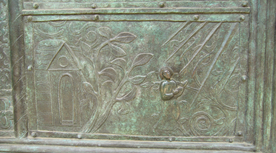 Heikichi (島田平吉), the older brother of the founder Shimada Seiichi (島田晴一). [Image at right] In January of 1895 Shimada received a message from Tenshin Ōmikami announcing that a younger brother would be born the following year, and he was to be named Seiichi. He also received a schoolbag and shoes of high quality, which he said were gifts from the deity to be used by Seiichi when he was born. Throughout the year prior to Seiichi’s birth, Heikichi did miracle working in the name of Tenshin Ōmikami. Then in 1896, the official founder of the religion, Shimada Seiichi, was born. He is referred to as “Shodai-sama” (初代様, First Master) by followers.
Heikichi (島田平吉), the older brother of the founder Shimada Seiichi (島田晴一). [Image at right] In January of 1895 Shimada received a message from Tenshin Ōmikami announcing that a younger brother would be born the following year, and he was to be named Seiichi. He also received a schoolbag and shoes of high quality, which he said were gifts from the deity to be used by Seiichi when he was born. Throughout the year prior to Seiichi’s birth, Heikichi did miracle working in the name of Tenshin Ōmikami. Then in 1896, the official founder of the religion, Shimada Seiichi, was born. He is referred to as “Shodai-sama” (初代様, First Master) by followers.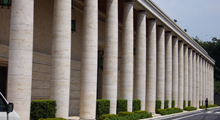 In response, Seiichi officially registered the religion as Tenshin Ōmikamikyō in 1952. From the 1960s to the 1970s the religion continued to grow and its activities expanded. In 1960, the Tokyo temple (Image at right) was completed, mostly through donations from members. Following this, in 1961 Seiichi received divine instruction from Tenshin Ōmikami in how to perform a healing method involving injections of “divine water” (go-shinsui) to cure a range of illnesses. In 1967, their healing facility, Yamatoura Clinic, officially opened; it was later renamed Tenshin Clinic.
In response, Seiichi officially registered the religion as Tenshin Ōmikamikyō in 1952. From the 1960s to the 1970s the religion continued to grow and its activities expanded. In 1960, the Tokyo temple (Image at right) was completed, mostly through donations from members. Following this, in 1961 Seiichi received divine instruction from Tenshin Ōmikami in how to perform a healing method involving injections of “divine water” (go-shinsui) to cure a range of illnesses. In 1967, their healing facility, Yamatoura Clinic, officially opened; it was later renamed Tenshin Clinic.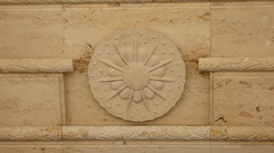 generic term for god, kami-sama (神様). Members note they are monotheistic, worship only Tenshin Ōmikami, and do not worship any other gods or intermediaries. Moreover, they do not see their leaders or the founder as being divine, but rather as messengers of Tenshin Ōmikami. They note that Tenshin Ōmikami has descended to Earth through human forms on three occasions, first as Moses, second as Jesus, and third as Heikichi and Seiichi (which is seen as one instance). Tenshinseiky ō is thus seen as being part of the same lineage of all world religions, though it does not posit any particular genealogical progression in terms of religious teachings or revelations. Some members also note that while they believe that Tenshinseikyō is the “right” (tadashii) religion for them, other religions may be “right” for other people, and that ultimately all religions have the same roots. Thus, members generally do not express feelings of competition or animosity with other religious groups or beliefs.
generic term for god, kami-sama (神様). Members note they are monotheistic, worship only Tenshin Ōmikami, and do not worship any other gods or intermediaries. Moreover, they do not see their leaders or the founder as being divine, but rather as messengers of Tenshin Ōmikami. They note that Tenshin Ōmikami has descended to Earth through human forms on three occasions, first as Moses, second as Jesus, and third as Heikichi and Seiichi (which is seen as one instance). Tenshinseiky ō is thus seen as being part of the same lineage of all world religions, though it does not posit any particular genealogical progression in terms of religious teachings or revelations. Some members also note that while they believe that Tenshinseikyō is the “right” (tadashii) religion for them, other religions may be “right” for other people, and that ultimately all religions have the same roots. Thus, members generally do not express feelings of competition or animosity with other religious groups or beliefs.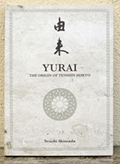 The teachings consist of forty-seven short phrases that emphasize the virtues of positive thinking, sincerity, hard work, perseverance, self-reflection, gratitude, and forgiveness. Each day of the month is assigned a particular teaching for that day, to be addressed in the daily ritual meetings and reflected on by members, and the teachings are rotated each month. Based on the founder’s experiences as a businessman, many teachings address how to attain success and prosperity, including proper business ethics for dealing with customers, employees, and coworkers. Additional doctrinal texts include the prayers found in their prayer book, Tenshinseikyō Norito, and the book “The Origins” (由来, yurai), [Image at right] a text which documents the life of the founder.
The teachings consist of forty-seven short phrases that emphasize the virtues of positive thinking, sincerity, hard work, perseverance, self-reflection, gratitude, and forgiveness. Each day of the month is assigned a particular teaching for that day, to be addressed in the daily ritual meetings and reflected on by members, and the teachings are rotated each month. Based on the founder’s experiences as a businessman, many teachings address how to attain success and prosperity, including proper business ethics for dealing with customers, employees, and coworkers. Additional doctrinal texts include the prayers found in their prayer book, Tenshinseikyō Norito, and the book “The Origins” (由来, yurai), [Image at right] a text which documents the life of the founder.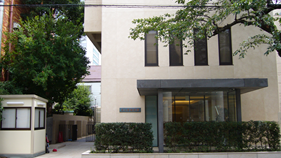 services for members. Dedicated consultation rooms in their temples are used for this purpose, and are available by appointment for a fee. In addition to consultations, Tenshinseikyō runs two Tenshin Clinics, one located next to the Tokyo headquarters [Image at right] and one in Nagasaki, which administer a kind of “divine water,” called go-shinsui 御神水), via injection. It is said to possess healing powers, and is available for use by both members and non-members for a fee (members receive a considerable discount).
services for members. Dedicated consultation rooms in their temples are used for this purpose, and are available by appointment for a fee. In addition to consultations, Tenshinseikyō runs two Tenshin Clinics, one located next to the Tokyo headquarters [Image at right] and one in Nagasaki, which administer a kind of “divine water,” called go-shinsui 御神水), via injection. It is said to possess healing powers, and is available for use by both members and non-members for a fee (members receive a considerable discount).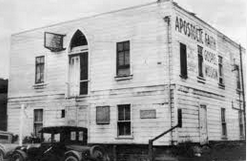 nations, regions or in local churches over the past century. The Toronto Blessing is arguably the best-known North American revival since the early twentieth century Azusa Street Revival, commonly considered to be the birthplace of American pentecostalism. What happened in a small mission on Azusa Street in Los Angeles , California from 1906-1909 has proved to be an important catalyst, if not the most important catalyst, that launched the global Pentecostal Movement (Anderson 2004; Robeck 2006).
nations, regions or in local churches over the past century. The Toronto Blessing is arguably the best-known North American revival since the early twentieth century Azusa Street Revival, commonly considered to be the birthplace of American pentecostalism. What happened in a small mission on Azusa Street in Los Angeles , California from 1906-1909 has proved to be an important catalyst, if not the most important catalyst, that launched the global Pentecostal Movement (Anderson 2004; Robeck 2006).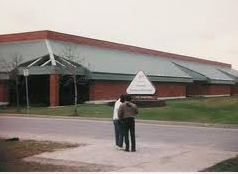 seated three thousand and had once housed the Asian Trade Center. With international access readily available by air, the Internet and the emerging World Wide Web, religious seekers would come from all continents (save for Antarctica )! Its story includes many adoptions and adaptations during its twenty year history as it sparked new and refreshed old revival fires. It continues to play a significant role (directly and indirectly) in reviving and expanding streams of pentecostalism found in the Americas and across the globe.
seated three thousand and had once housed the Asian Trade Center. With international access readily available by air, the Internet and the emerging World Wide Web, religious seekers would come from all continents (save for Antarctica )! Its story includes many adoptions and adaptations during its twenty year history as it sparked new and refreshed old revival fires. It continues to play a significant role (directly and indirectly) in reviving and expanding streams of pentecostalism found in the Americas and across the globe.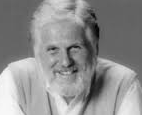 saxophone player for the 1960s popular rock band, The Righteous Brothers. Wimber would become a Christian believer in the mid-1960s and affiliated with the Yorba Linda Friends Church in southern California. He was “recorded” (“ordained” in the evangelical Quaker tradition), served as a co-pastor, and began small group with a focus on worship and prayer (that grew to 100 people). Tension would develop between Wimber’s “small group” and Yorba Linda Friends Church , and Wimber would leave the Quakers to focus on his new congregation. In 1977, Wimber associated his church with Chuck Smith’s Calvary network. Smith (although raised Pentecostal had moved away from its experiential theology) welcomed hippies into his congregation that became the “mother church” of the Calvary movement (Miller 1997). Acceptance of young converts from the controversial “Jesus People Movement” of the 1970s was atypical for evangelical church leaders of the time, but hippies grooving on Jesus rather than drugs was something with which Wimber easily resonated.
saxophone player for the 1960s popular rock band, The Righteous Brothers. Wimber would become a Christian believer in the mid-1960s and affiliated with the Yorba Linda Friends Church in southern California. He was “recorded” (“ordained” in the evangelical Quaker tradition), served as a co-pastor, and began small group with a focus on worship and prayer (that grew to 100 people). Tension would develop between Wimber’s “small group” and Yorba Linda Friends Church , and Wimber would leave the Quakers to focus on his new congregation. In 1977, Wimber associated his church with Chuck Smith’s Calvary network. Smith (although raised Pentecostal had moved away from its experiential theology) welcomed hippies into his congregation that became the “mother church” of the Calvary movement (Miller 1997). Acceptance of young converts from the controversial “Jesus People Movement” of the 1970s was atypical for evangelical church leaders of the time, but hippies grooving on Jesus rather than drugs was something with which Wimber easily resonated.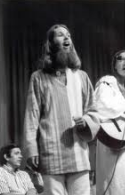 erupted unexpectedly in his church. Wimber had invited Lonnie Frisbee, a young hippie who had been a key figure in the Jesus People Movement, to give his testimony (Frisbee with Sachs 2012). An unexpected outbreak of strange physical manifestations, including the speaking in tongues, occurred in the Mother’s Day service, leaving Wimber nonplused and seeking divine guidance. In response to a prayer asking God if the seeming pandemonium that swept through the congregation was of divine origin, a minister friend from Colorado (unaware of what had transpired at Wimber’s church that morning) phoned saying that he had been divinely instructed to call and to tell Wimber “It was Me.” Wimber would soon abandon Smith’s cessationist theology that discounted the paranormal “gifts of the Spirit” (e.g. speaking in tongues, healing, prophecies and miracles) as practiced in Pentecostalism (Jackson 1999). Once again Wimber would find himself in tension with a religious mentor.
erupted unexpectedly in his church. Wimber had invited Lonnie Frisbee, a young hippie who had been a key figure in the Jesus People Movement, to give his testimony (Frisbee with Sachs 2012). An unexpected outbreak of strange physical manifestations, including the speaking in tongues, occurred in the Mother’s Day service, leaving Wimber nonplused and seeking divine guidance. In response to a prayer asking God if the seeming pandemonium that swept through the congregation was of divine origin, a minister friend from Colorado (unaware of what had transpired at Wimber’s church that morning) phoned saying that he had been divinely instructed to call and to tell Wimber “It was Me.” Wimber would soon abandon Smith’s cessationist theology that discounted the paranormal “gifts of the Spirit” (e.g. speaking in tongues, healing, prophecies and miracles) as practiced in Pentecostalism (Jackson 1999). Once again Wimber would find himself in tension with a religious mentor. Gulliksen would give the leadership of the Vineyard Church to Wimber, and 1984, Wimber established the Association of Vineyard Churches (AVC), a network of churches. The AVC grew to include some 500 congregations spread throughout North America and in the United Kingdom within the next ten years. Wimber promoted the gifts of the spirit as “power evangelism,” where “the stuff” of supernatural happenings (especially divine healing) was affirmed as a propelling force for modern evangelism (Wimber and Springer 1986). The AVC became a primary marker for what Fuller Theological Seminary professor C. Peter Wagner called the “third wave” of the growing Pentecostal Movement in America . Many of these same spiritual phenomena experienced in Vineyard churches under Wimber’s ministry would later happen nightly at TAV/TACF.
Gulliksen would give the leadership of the Vineyard Church to Wimber, and 1984, Wimber established the Association of Vineyard Churches (AVC), a network of churches. The AVC grew to include some 500 congregations spread throughout North America and in the United Kingdom within the next ten years. Wimber promoted the gifts of the spirit as “power evangelism,” where “the stuff” of supernatural happenings (especially divine healing) was affirmed as a propelling force for modern evangelism (Wimber and Springer 1986). The AVC became a primary marker for what Fuller Theological Seminary professor C. Peter Wagner called the “third wave” of the growing Pentecostal Movement in America . Many of these same spiritual phenomena experienced in Vineyard churches under Wimber’s ministry would later happen nightly at TAV/TACF.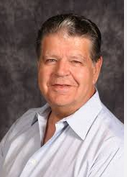 travel business to establish his first church, Jubilee Christian Fellowship, an independent congregation in Stratford, Ontario. Four years later Arnott met Wimber at “Signs and Wonders” Conference held in Vancouver, B.C. at which Wimber was a main speaker. In 1987, with the encouragement of Gary Best and his team from the Langley Vineyard in British Columbia, John and Carol Arnott together with their church joined the AVC. While living in Stratford in 1988, John and Carol had been making regular trips to Toronto where they began a “cell church” that met in the home of John’s mother. That ministry would become the Toronto Airport Vineyard (TAV). When the revival began in January, 1994, TAV was a congregation of a reported 350 people, including children (Steingard with Arnott 2014).
travel business to establish his first church, Jubilee Christian Fellowship, an independent congregation in Stratford, Ontario. Four years later Arnott met Wimber at “Signs and Wonders” Conference held in Vancouver, B.C. at which Wimber was a main speaker. In 1987, with the encouragement of Gary Best and his team from the Langley Vineyard in British Columbia, John and Carol Arnott together with their church joined the AVC. While living in Stratford in 1988, John and Carol had been making regular trips to Toronto where they began a “cell church” that met in the home of John’s mother. That ministry would become the Toronto Airport Vineyard (TAV). When the revival began in January, 1994, TAV was a congregation of a reported 350 people, including children (Steingard with Arnott 2014).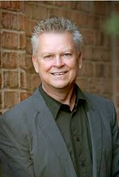 power of God affecting people physically and causing them to tremble and/or fall down.” During that conference Wimber prophesied blessings over Clark’s life that included a word that he is “a Prince in the Kingdom of God ” (Johnson and Clark 2011:25). Clark would later learn that “John [Wimber] had heard God tell him audibly that I would one day go around the world laying hands on pastors and leaders to impart and stir up the spiritual gifts in them” (Johnson and Clark 2011:25). But in August, 1993 this former Baptist now pastor of an AVC church in St. Louis, Missouri claimed to be “burned-out” and close to a nervous breakdown after years of tough but seemingly unfruitful ministry. Nearly at wits end, Clark reluctantly and skeptically went to Tulsa, Oklahoma where Rodney Howard-Browne, an immigrant evangelist from South Africa who was at the center of the so-called “laughing revival,” was speaking. Clark found both his heaviness and skepticism lift during this revival meeting when he wound up on the floor laughing for no apparent reason. He soon attended another Howard-Browne meeting in Lakeland , Florida when Clark felt a tremendous power come into his hands as Howard-Browne” said to him: “This is the fire of God in your hands—go home and pray for everybody in your church.” Clark did as instructed and reportedly 95 percent of the congregation fell on the floor “under the power” (Poloma 2003:156).
power of God affecting people physically and causing them to tremble and/or fall down.” During that conference Wimber prophesied blessings over Clark’s life that included a word that he is “a Prince in the Kingdom of God ” (Johnson and Clark 2011:25). Clark would later learn that “John [Wimber] had heard God tell him audibly that I would one day go around the world laying hands on pastors and leaders to impart and stir up the spiritual gifts in them” (Johnson and Clark 2011:25). But in August, 1993 this former Baptist now pastor of an AVC church in St. Louis, Missouri claimed to be “burned-out” and close to a nervous breakdown after years of tough but seemingly unfruitful ministry. Nearly at wits end, Clark reluctantly and skeptically went to Tulsa, Oklahoma where Rodney Howard-Browne, an immigrant evangelist from South Africa who was at the center of the so-called “laughing revival,” was speaking. Clark found both his heaviness and skepticism lift during this revival meeting when he wound up on the floor laughing for no apparent reason. He soon attended another Howard-Browne meeting in Lakeland , Florida when Clark felt a tremendous power come into his hands as Howard-Browne” said to him: “This is the fire of God in your hands—go home and pray for everybody in your church.” Clark did as instructed and reportedly 95 percent of the congregation fell on the floor “under the power” (Poloma 2003:156). from the mother church on Attwell Drive in Toronto . On January 24, 2014, CTF hosted a simple Twentieth Anniversary Celebration Night with John Arnott and Randy Clark as speakers: “20 Years Ago on January 20 th 1994, God blessed our small church at the end of the runway in Toronto with an outpouring of the Holy Spirit. Since then God has transformed so many people’s lives all over the world!” (“Twentieth Anniversary Celebration” 2014). A related conference followed during the next three days and nights under the auspices of the Revival Alliance.
from the mother church on Attwell Drive in Toronto . On January 24, 2014, CTF hosted a simple Twentieth Anniversary Celebration Night with John Arnott and Randy Clark as speakers: “20 Years Ago on January 20 th 1994, God blessed our small church at the end of the runway in Toronto with an outpouring of the Holy Spirit. Since then God has transformed so many people’s lives all over the world!” (“Twentieth Anniversary Celebration” 2014). A related conference followed during the next three days and nights under the auspices of the Revival Alliance.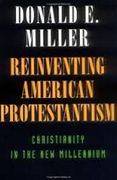 Association of Vineyard Churches] . . . do not fit the traditional categories.” Their perspective differs from both Christian conservatives and liberals. Miller calls them as “doctrinal minimalists” and “cultural innovators,” and provides the following succinct description in support of his thesis:
Association of Vineyard Churches] . . . do not fit the traditional categories.” Their perspective differs from both Christian conservatives and liberals. Miller calls them as “doctrinal minimalists” and “cultural innovators,” and provides the following succinct description in support of his thesis: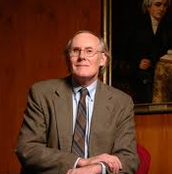 TAV as a scholar-observer turned pilgrim, provides some insightful text about the interrelationship of religious experience, rituals, and theology based on his visits to TAV/TACF. Pinnock (2000:4-6) writes:
TAV as a scholar-observer turned pilgrim, provides some insightful text about the interrelationship of religious experience, rituals, and theology based on his visits to TAV/TACF. Pinnock (2000:4-6) writes: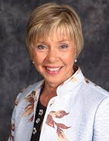 Alliance 2014 Conference held in Toronto, Carol Arnott (2014) updated the audience about the prophetic symbolism of Chu ‘s roaring. After not hearing from him for years, Chu reconnected with the Arnotts in the fall of 2013 and was invited to a Partners in Harvest gathering to share his story. Carol retold Chu’s story, noting that Chu thanked them for not shutting him down when he roared like a lion in 1994. She then showed a film clip of Chu’s involvement with top Christian leaders in China who have been instrumental in bringing an estimated fifty to sixty million Chinese people to Christianity (Carol Arnott, 2014). The emphasis then and now has been on judging the testimonies and potential effects of manifestations rather than outlawing them simply because they seemed “weird.” The case of Pastor Chu roaring like a lion demonstrates how the loose structure and flexible norms at TAV/TACF creates space for “liminality” to flourish.
Alliance 2014 Conference held in Toronto, Carol Arnott (2014) updated the audience about the prophetic symbolism of Chu ‘s roaring. After not hearing from him for years, Chu reconnected with the Arnotts in the fall of 2013 and was invited to a Partners in Harvest gathering to share his story. Carol retold Chu’s story, noting that Chu thanked them for not shutting him down when he roared like a lion in 1994. She then showed a film clip of Chu’s involvement with top Christian leaders in China who have been instrumental in bringing an estimated fifty to sixty million Chinese people to Christianity (Carol Arnott, 2014). The emphasis then and now has been on judging the testimonies and potential effects of manifestations rather than outlawing them simply because they seemed “weird.” The case of Pastor Chu roaring like a lion demonstrates how the loose structure and flexible norms at TAV/TACF creates space for “liminality” to flourish.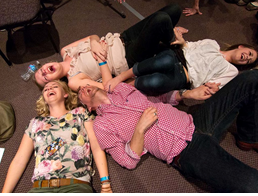 the assistance of a “catcher” who stood behind the pray-ee (to assure no one was injured in the fall) would offer informal prayer. On any given night rows upon rows of bodies could be found sprawled out over the floor. “Carpet time” with pray-ees dropping faint to the floor (also known as “going under the power,” “being slain in the spirit” or “resting in the spirit” in earlier waves of pentecostalism) was widespread at TAV/TACF. Scores of trained prayer team members would minister nightly to the hundreds of individuals who lined up for prayer at the end of each service. “Carpet time” differed from the earlier practice of “resting in the spirit” that was widespread during the second wave of pentecostalism in its duration and democratization. No longer was the pastor or conference leader the person responsible for praying for the masses; prayer teams, made up of scores of volunteers, became an important medium for the Blessing. While falling to the ground in a seeming trance was a common experience in the second pentecostal wave, pray-ees would normally quickly get up and return to their seats. Toronto pilgrims, however, were instructed not to be in a hurry to rise from the floor. Waves of the Spirit’s manifest presence could keep coming, so it was important to wait and to “soak” in the divine presence allowing God time to fully impart His blessing. Falling to the ground and other physical manifestations were not limited to the church auditorium, they could be seen in hotel lobbies, restaurants and even parking lots, particularly during the earliest years of the revival. (Drivers would jovially be warned that bodies seen in the parking lot were not put there as speed bumps.)
the assistance of a “catcher” who stood behind the pray-ee (to assure no one was injured in the fall) would offer informal prayer. On any given night rows upon rows of bodies could be found sprawled out over the floor. “Carpet time” with pray-ees dropping faint to the floor (also known as “going under the power,” “being slain in the spirit” or “resting in the spirit” in earlier waves of pentecostalism) was widespread at TAV/TACF. Scores of trained prayer team members would minister nightly to the hundreds of individuals who lined up for prayer at the end of each service. “Carpet time” differed from the earlier practice of “resting in the spirit” that was widespread during the second wave of pentecostalism in its duration and democratization. No longer was the pastor or conference leader the person responsible for praying for the masses; prayer teams, made up of scores of volunteers, became an important medium for the Blessing. While falling to the ground in a seeming trance was a common experience in the second pentecostal wave, pray-ees would normally quickly get up and return to their seats. Toronto pilgrims, however, were instructed not to be in a hurry to rise from the floor. Waves of the Spirit’s manifest presence could keep coming, so it was important to wait and to “soak” in the divine presence allowing God time to fully impart His blessing. Falling to the ground and other physical manifestations were not limited to the church auditorium, they could be seen in hotel lobbies, restaurants and even parking lots, particularly during the earliest years of the revival. (Drivers would jovially be warned that bodies seen in the parking lot were not put there as speed bumps.)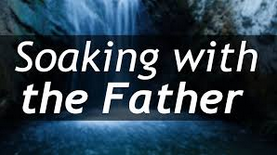 potential religious movement in its own right. Soaking prayer has been defined (von Buseck, n.d .) as “simply positioning yourself to express your love to God. It is not intercession. It is not coming to God with a list of needs. It is the act of entering into the presence of God to experience His love — and then allowing the love of God through the Holy Spirit to revolutionize your love for Him.”
potential religious movement in its own right. Soaking prayer has been defined (von Buseck, n.d .) as “simply positioning yourself to express your love to God. It is not intercession. It is not coming to God with a list of needs. It is the act of entering into the presence of God to experience His love — and then allowing the love of God through the Holy Spirit to revolutionize your love for Him.”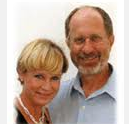 American missionaries to Mozambique, embraced the personal blessing but coupled it with exemplifying its power to serve the poor. First Rolland and then Heidi came to Toronto in 1996, as burned-out pilgrims who needed spiritual refreshing to maintain their newest ministry in a country that was just emerging from a long civil war. They would become living examples of how personal spiritual blessings can empower extraordinary love and service. Heidi (sometimes lovingly referred to as a pentecostal Mother Teresa) has especially captured the hearts of those involved in the Blessing with her testimonies (many are found on YouTube) of how visits to Toronto have changed her life and empowered their ministry (Stafford 2012). Her accounts have provided the revival movement with stories of miracles far surpassing those customarily heard in North America, accounts coupled with her compelling call to love God and to love the poor (Baker and Baker 2002; Baker 2008; see also Lee, Poloma and Post 2013 for further discussion). The Bakers not only breathed new life into the Toronto Blessing but they continue to serve as an important link among those involved in the web-like Partners in Harvest and Revival Alliance, two organizations in which different ministries work together toward the common goal of promoting revival.
American missionaries to Mozambique, embraced the personal blessing but coupled it with exemplifying its power to serve the poor. First Rolland and then Heidi came to Toronto in 1996, as burned-out pilgrims who needed spiritual refreshing to maintain their newest ministry in a country that was just emerging from a long civil war. They would become living examples of how personal spiritual blessings can empower extraordinary love and service. Heidi (sometimes lovingly referred to as a pentecostal Mother Teresa) has especially captured the hearts of those involved in the Blessing with her testimonies (many are found on YouTube) of how visits to Toronto have changed her life and empowered their ministry (Stafford 2012). Her accounts have provided the revival movement with stories of miracles far surpassing those customarily heard in North America, accounts coupled with her compelling call to love God and to love the poor (Baker and Baker 2002; Baker 2008; see also Lee, Poloma and Post 2013 for further discussion). The Bakers not only breathed new life into the Toronto Blessing but they continue to serve as an important link among those involved in the web-like Partners in Harvest and Revival Alliance, two organizations in which different ministries work together toward the common goal of promoting revival. established by John Arnott in 1981. Arnott met John Wimber, founder of the newly formed Association of Vineyard Churches, in 1986; a year later he and his church would join the AVC. The Toronto Airport Vineyard (TAV) began as an AVC “kinship group” planted by John and Carol Arnott in 1988 (then known as Vineyard Christian Fellowship Toronto but renamed when another Vineyard church opened in Toronto ). In 1991, the Arnotts moved to Toronto and began to assemble a staff for their new church. The “Toronto Blessing” revival erupted in January, 1994 and tension would soon develop between the TAV and the AVC. TAV would be formally dismissed from the AVC by Wimber in late 1995, largely over disagreements about particular ritualistic practices (including “carpet time” and “prophetic mime”). A new church organization focusing on revival would be born.
established by John Arnott in 1981. Arnott met John Wimber, founder of the newly formed Association of Vineyard Churches, in 1986; a year later he and his church would join the AVC. The Toronto Airport Vineyard (TAV) began as an AVC “kinship group” planted by John and Carol Arnott in 1988 (then known as Vineyard Christian Fellowship Toronto but renamed when another Vineyard church opened in Toronto ). In 1991, the Arnotts moved to Toronto and began to assemble a staff for their new church. The “Toronto Blessing” revival erupted in January, 1994 and tension would soon develop between the TAV and the AVC. TAV would be formally dismissed from the AVC by Wimber in late 1995, largely over disagreements about particular ritualistic practices (including “carpet time” and “prophetic mime”). A new church organization focusing on revival would be born.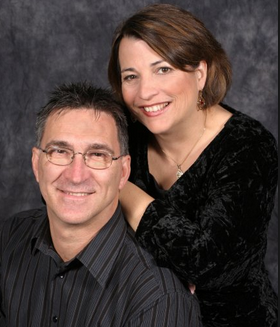 Baptist tradition to align with TAV (Steingard with Arnott 2014). In January, 2006, Steve and Sandra (married couples are generally regarded as a ministerial team) were made senior pastors (senior leaders) of the Toronto CTF church and John and Carol assumed the title of “founding pastors.” The Arnotts also serve as President of Catch the Fire (World), with Steve and Sandra Long and Duncan and Kate Smith (of CTF Raleigh, North Carolina) serving as vice-presidents.
Baptist tradition to align with TAV (Steingard with Arnott 2014). In January, 2006, Steve and Sandra (married couples are generally regarded as a ministerial team) were made senior pastors (senior leaders) of the Toronto CTF church and John and Carol assumed the title of “founding pastors.” The Arnotts also serve as President of Catch the Fire (World), with Steve and Sandra Long and Duncan and Kate Smith (of CTF Raleigh, North Carolina) serving as vice-presidents. churches and ministries worldwide with one hundred and fifty of those considered as ‘Friends in Harvest’” (Steingard with Arnott 2014:224). The PIH website (“Revival Alliance Conference” 2014) described Partners in Harvest as serving “PIH family members’ primary relational affiliation and covering” and as a “primary source of accountability.” The purpose of PIH is “to provide encouragement, blessing and a relational network for the building up of its members.”
churches and ministries worldwide with one hundred and fifty of those considered as ‘Friends in Harvest’” (Steingard with Arnott 2014:224). The PIH website (“Revival Alliance Conference” 2014) described Partners in Harvest as serving “PIH family members’ primary relational affiliation and covering” and as a “primary source of accountability.” The purpose of PIH is “to provide encouragement, blessing and a relational network for the building up of its members.”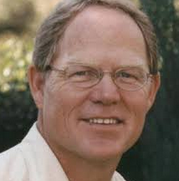 Calvary Chapel network, President of the Christian Research Institute, and host of The Bible Answer Man radio-talk show. Hanegraaff has pejoratively described the revival movement as “spiritual cyanide” that is “aping the practices of pagan spirituality” with leaders who “work their devotees into an altered state of consciousness” (cited in Steingard with Arnott 2014:148).
Calvary Chapel network, President of the Christian Research Institute, and host of The Bible Answer Man radio-talk show. Hanegraaff has pejoratively described the revival movement as “spiritual cyanide” that is “aping the practices of pagan spirituality” with leaders who “work their devotees into an altered state of consciousness” (cited in Steingard with Arnott 2014:148). new fuel to revival critics. Strom (2012, 29) writes:
new fuel to revival critics. Strom (2012, 29) writes: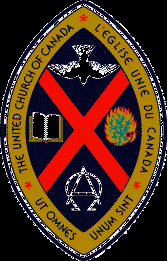 than on the theological vision of a single founder or movement.
than on the theological vision of a single founder or movement.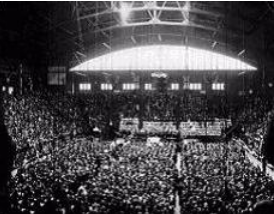 morning of Wednesday, June 10, 1925, a rousing service in downtown Toronto formally inaugurated The United Church of Canada. Eight thousand persons celebrated in a wrestling palace and ice hockey venue. Thousands more attended parallel services across the country or listened to the live broadcast of the celebration. The union produced a church twice as large as the Anglican Church, the next largest Protestant denomination. Only the Roman Catholic Church was larger (Schweitzer et al. 2012:4-6, 9).
morning of Wednesday, June 10, 1925, a rousing service in downtown Toronto formally inaugurated The United Church of Canada. Eight thousand persons celebrated in a wrestling palace and ice hockey venue. Thousands more attended parallel services across the country or listened to the live broadcast of the celebration. The union produced a church twice as large as the Anglican Church, the next largest Protestant denomination. Only the Roman Catholic Church was larger (Schweitzer et al. 2012:4-6, 9).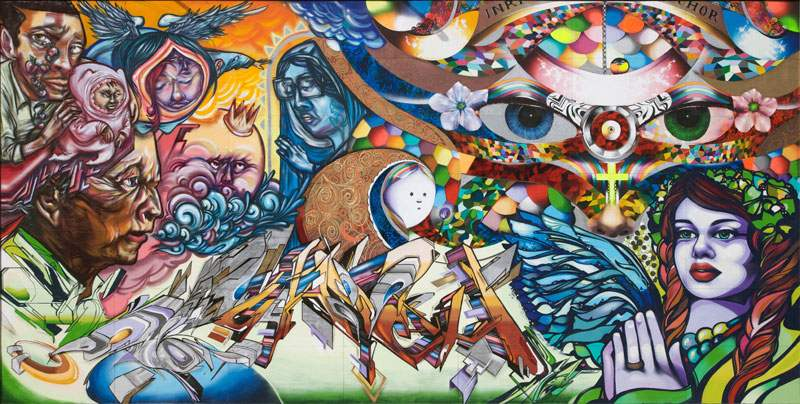 abortion, women’s roles in the church (perhaps the most contentious), French-English relations, relationships with First Nations peoples, racism in South Africa and the right of the Palestine Liberation Organization to represent the Palestinians (Schweitzer et al. 2012:109-11, 129-35).
abortion, women’s roles in the church (perhaps the most contentious), French-English relations, relationships with First Nations peoples, racism in South Africa and the right of the Palestine Liberation Organization to represent the Palestinians (Schweitzer et al. 2012:109-11, 129-35).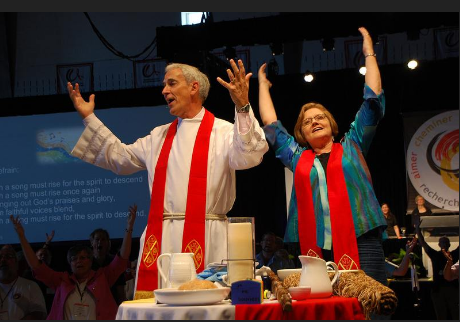 garments, though they do not necessarily follow the colors of the season as they do in liturgical churches (united-church.ca Worship Resources, Church Seasons and Special Sundays).
garments, though they do not necessarily follow the colors of the season as they do in liturgical churches (united-church.ca Worship Resources, Church Seasons and Special Sundays).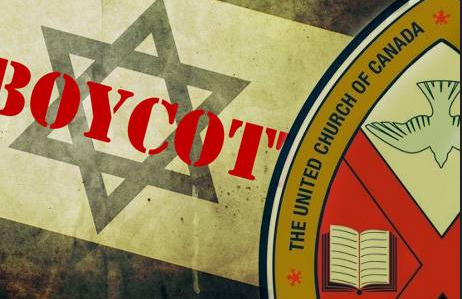 supported Palestinian aspirations. While the UCoC has a history of strong support for Israel and the Jewish community generally, recent actions in support of Palestinians, including a call for boycott of Israeli goods traceable to settler communities in disputed areas, has enraged a number of very vocal supporters of Israel. The church has been specifically accused in print of anti-Semitism (Schweitzer et al. 2012:239-57; Lewis 2012).
supported Palestinian aspirations. While the UCoC has a history of strong support for Israel and the Jewish community generally, recent actions in support of Palestinians, including a call for boycott of Israeli goods traceable to settler communities in disputed areas, has enraged a number of very vocal supporters of Israel. The church has been specifically accused in print of anti-Semitism (Schweitzer et al. 2012:239-57; Lewis 2012).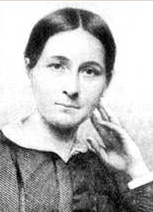 age and was never able to pinpoint the exact moment of her conversion. She married Walter Palmer on September 28, 1827. They had six children, three of whom lived to adulthood. The Palmers were active laypeople in the Methodist Episcopal Church and participated in numerous charitable activities. Both taught Sunday school classes. In 1839, Phoebe Palmer became the first woman to lead a class of both women and men in New York City.
age and was never able to pinpoint the exact moment of her conversion. She married Walter Palmer on September 28, 1827. They had six children, three of whom lived to adulthood. The Palmers were active laypeople in the Methodist Episcopal Church and participated in numerous charitable activities. Both taught Sunday school classes. In 1839, Phoebe Palmer became the first woman to lead a class of both women and men in New York City.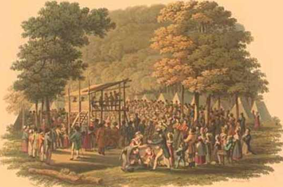 churches and at camp meetings [Image at right], which generally were held outdoors in more rural areas. The content of her sermons was the same regardless of the location. Palmer did not ignore the goal of bringing sinners to Christ through sermons, which was historically the focus of revivals, but her emphasis was on holiness. By 1853 her schedule included Canada. Her labors there in 1857 resulted in more than 2,000 conversions and hundreds of Christians who claimed the baptism of the Holy Ghost or holiness (Palmer 1859:259). Her ministry there contributed to the general Prayer Revival of 1857–1858, which resulted in more than 2,000,000 converts in the United States and the British Isles. Between 1859 and 1863, Palmer preached at fifty-nine locations throughout the British Isles (White 1986:241–42). At one meeting in Sunderland, 3,000 attended her services held over a period of twenty-nine days, with some people turned away. She reported 2,000 seekers there, including approximately 200 who experienced holiness under her preaching (Wheatley 1881:355, 356). Between 1866 and 1870 she held services throughout the United States and eastern Canada (Raser 1987:69–70). At a camp meeting in Goderich, Canada in 1868, about 6,000 gathered to hear her preach (Wheatley 1881:445, 415). Palmer continued to accept preaching engagements until shortly before her death. Overall, she preached before hundreds of thousands of people at more than 300 camp meetings and revivals.
churches and at camp meetings [Image at right], which generally were held outdoors in more rural areas. The content of her sermons was the same regardless of the location. Palmer did not ignore the goal of bringing sinners to Christ through sermons, which was historically the focus of revivals, but her emphasis was on holiness. By 1853 her schedule included Canada. Her labors there in 1857 resulted in more than 2,000 conversions and hundreds of Christians who claimed the baptism of the Holy Ghost or holiness (Palmer 1859:259). Her ministry there contributed to the general Prayer Revival of 1857–1858, which resulted in more than 2,000,000 converts in the United States and the British Isles. Between 1859 and 1863, Palmer preached at fifty-nine locations throughout the British Isles (White 1986:241–42). At one meeting in Sunderland, 3,000 attended her services held over a period of twenty-nine days, with some people turned away. She reported 2,000 seekers there, including approximately 200 who experienced holiness under her preaching (Wheatley 1881:355, 356). Between 1866 and 1870 she held services throughout the United States and eastern Canada (Raser 1987:69–70). At a camp meeting in Goderich, Canada in 1868, about 6,000 gathered to hear her preach (Wheatley 1881:445, 415). Palmer continued to accept preaching engagements until shortly before her death. Overall, she preached before hundreds of thousands of people at more than 300 camp meetings and revivals.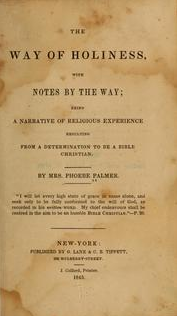 synonyms for holiness, such as sanctification, full salvation, promise of the Father, entire consecration, and perfect love. Her first book, The Way of Holiness with Notes by the Way (1843), [Image at right] was her spiritual autobiography that provided a roadmap for achieving holiness. Based on her own pursuit of holiness she explained a “shorter way,” which consisted of three steps: consecration, followed by faith, and then testimony.
synonyms for holiness, such as sanctification, full salvation, promise of the Father, entire consecration, and perfect love. Her first book, The Way of Holiness with Notes by the Way (1843), [Image at right] was her spiritual autobiography that provided a roadmap for achieving holiness. Based on her own pursuit of holiness she explained a “shorter way,” which consisted of three steps: consecration, followed by faith, and then testimony.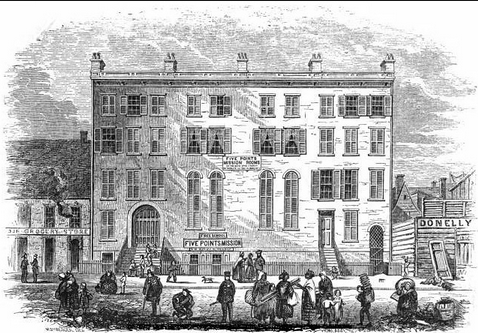 holiness believers engaged in activities that exhibited God’s love to those around them. This expression of social Christianity motivated by God’s love has become known as social holiness. It reflected Palmer’s emphasis on the responsibility of holiness adherents to be useful. Her ministry in the slums of New York City modeled social holiness. A notable example was her prominent role in founding the Five Points Mission in 1850 in lower Manhattan where the worst slums in New York City converged. Committed to addressing both the spiritual and physical needs of the neighborhood’s inhabitants, the Mission became one of the first settlement houses in the United States with a chapel, schoolrooms, and housing for twenty families (Raser 1987, 217).
holiness believers engaged in activities that exhibited God’s love to those around them. This expression of social Christianity motivated by God’s love has become known as social holiness. It reflected Palmer’s emphasis on the responsibility of holiness adherents to be useful. Her ministry in the slums of New York City modeled social holiness. A notable example was her prominent role in founding the Five Points Mission in 1850 in lower Manhattan where the worst slums in New York City converged. Committed to addressing both the spiritual and physical needs of the neighborhood’s inhabitants, the Mission became one of the first settlement houses in the United States with a chapel, schoolrooms, and housing for twenty families (Raser 1987, 217).